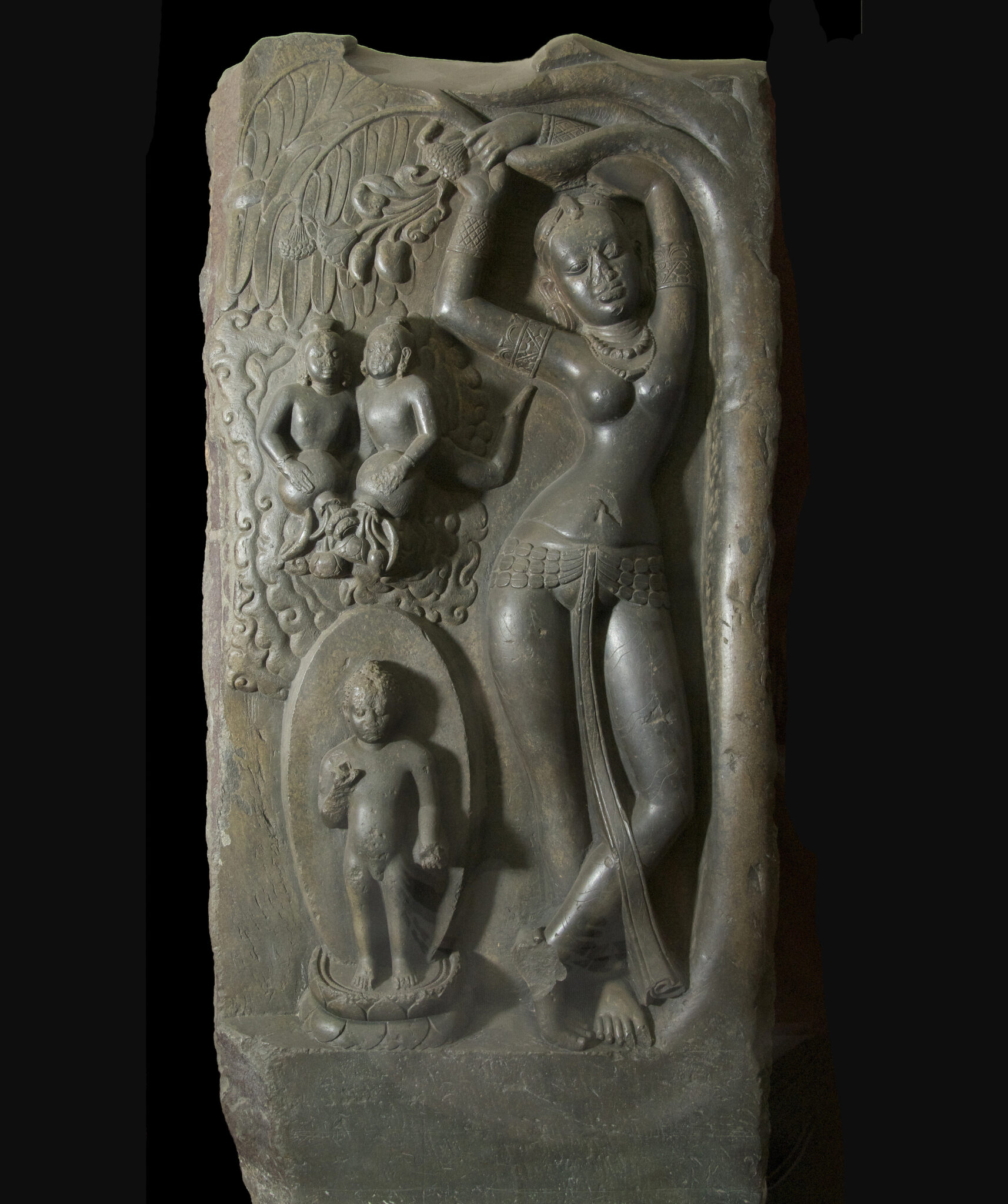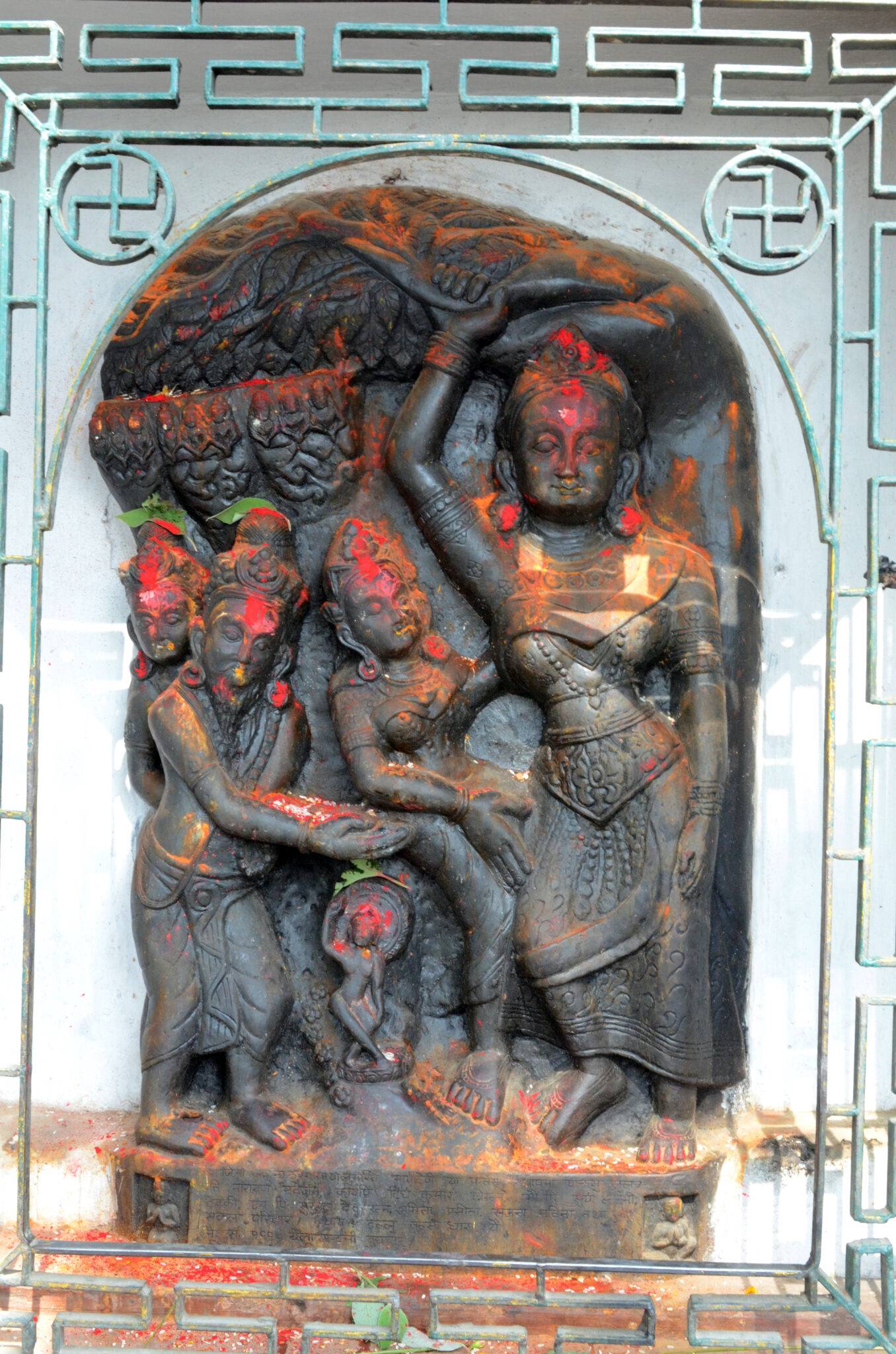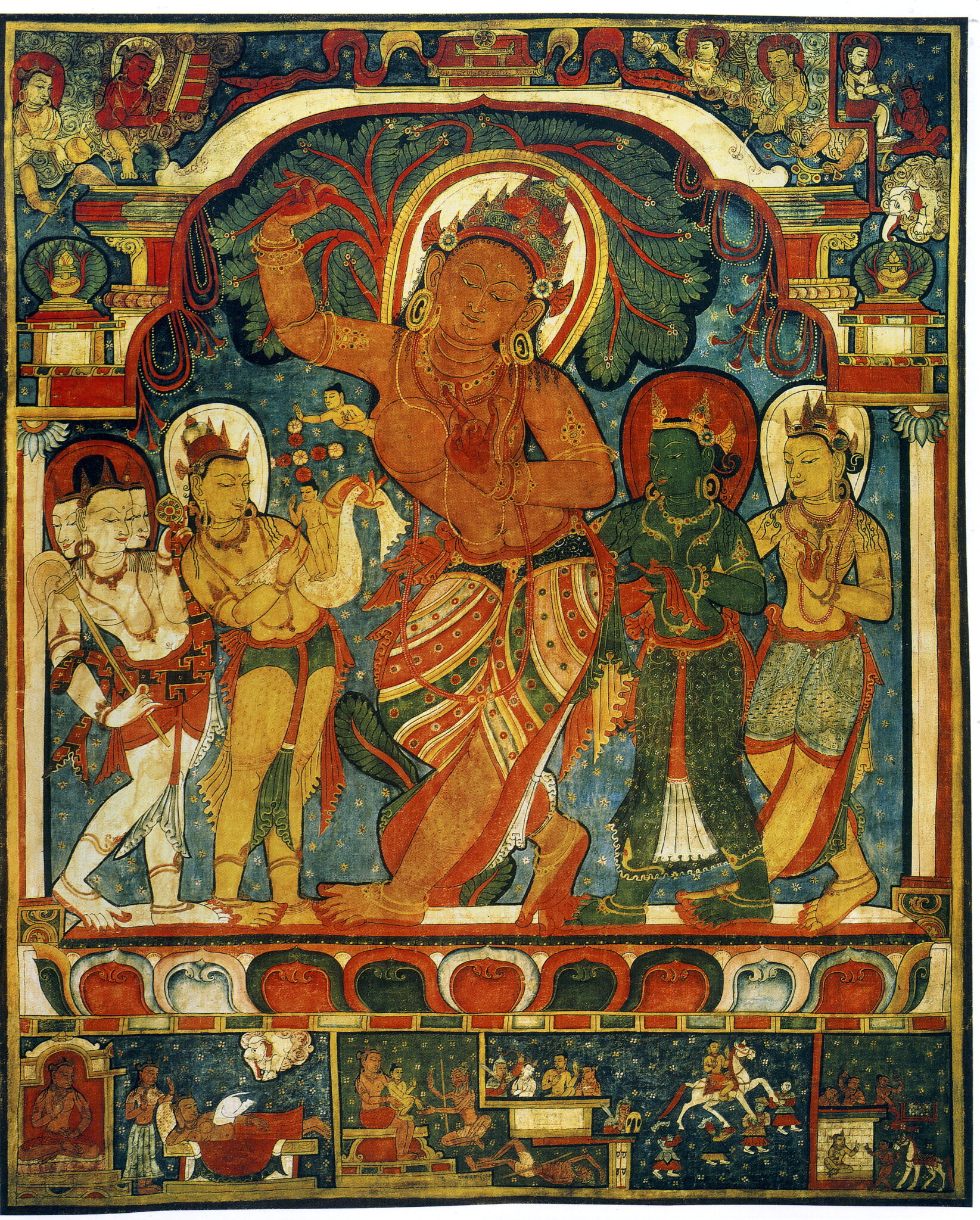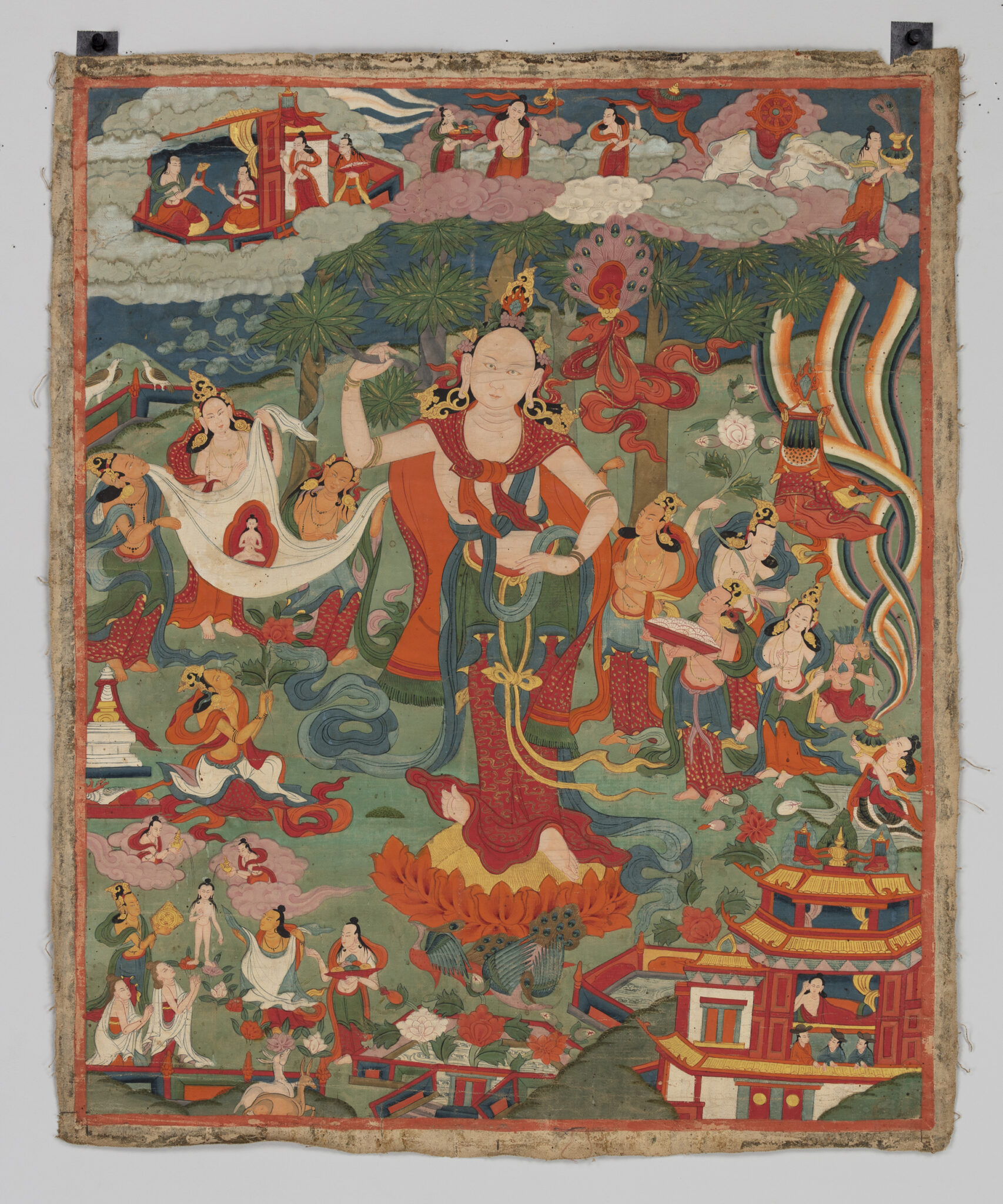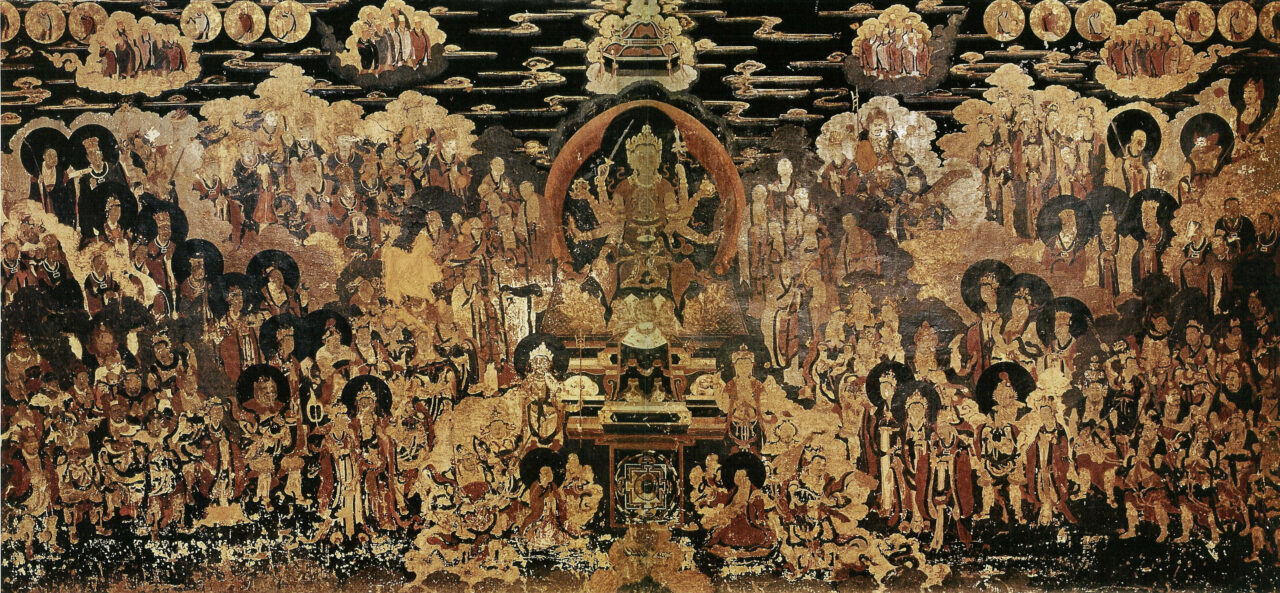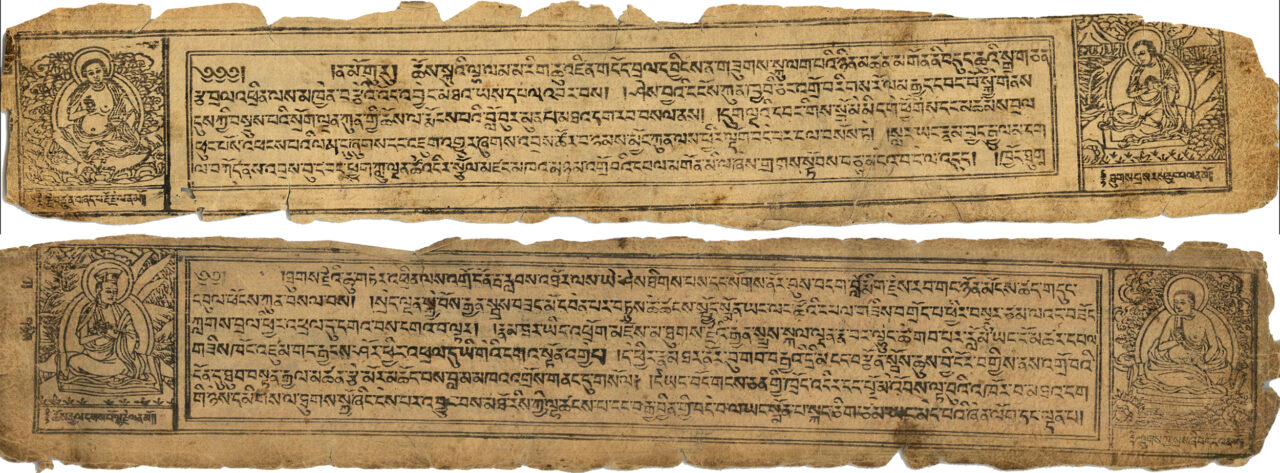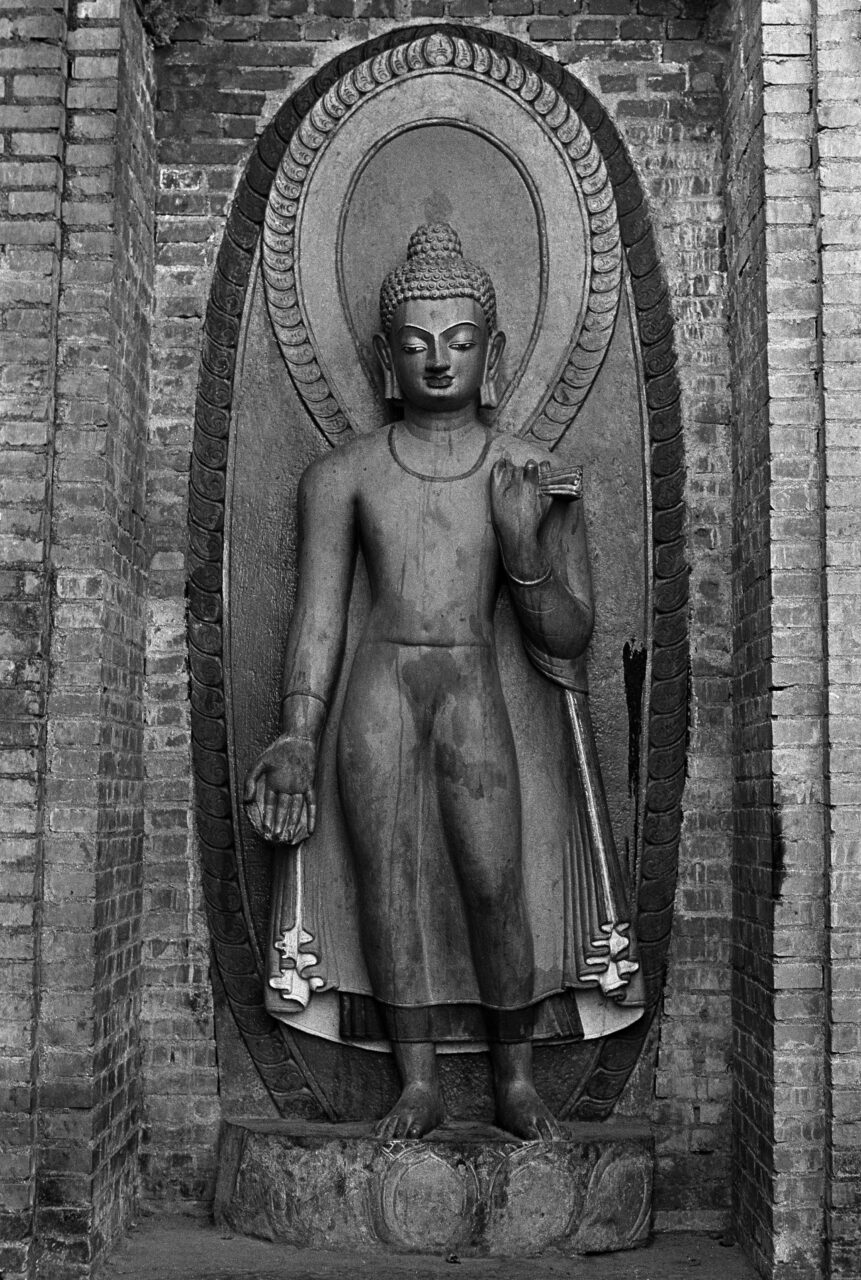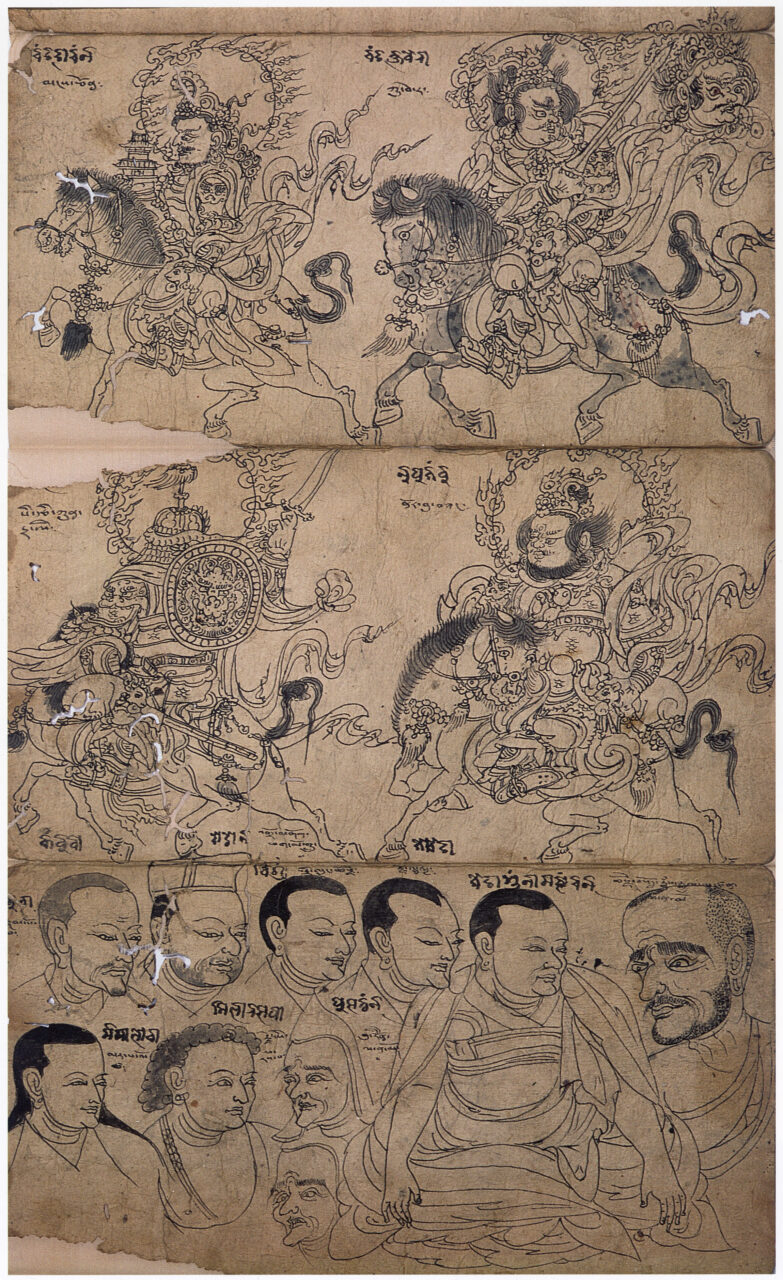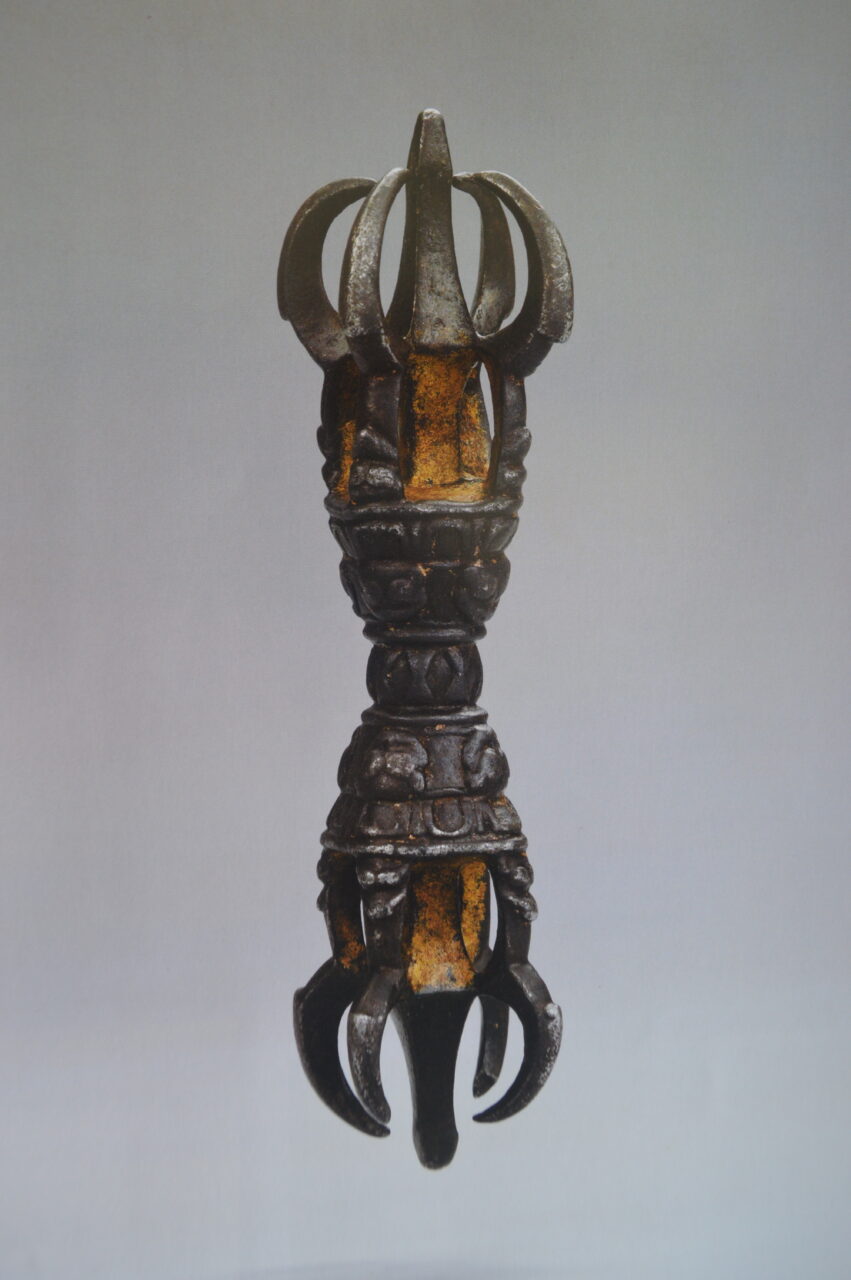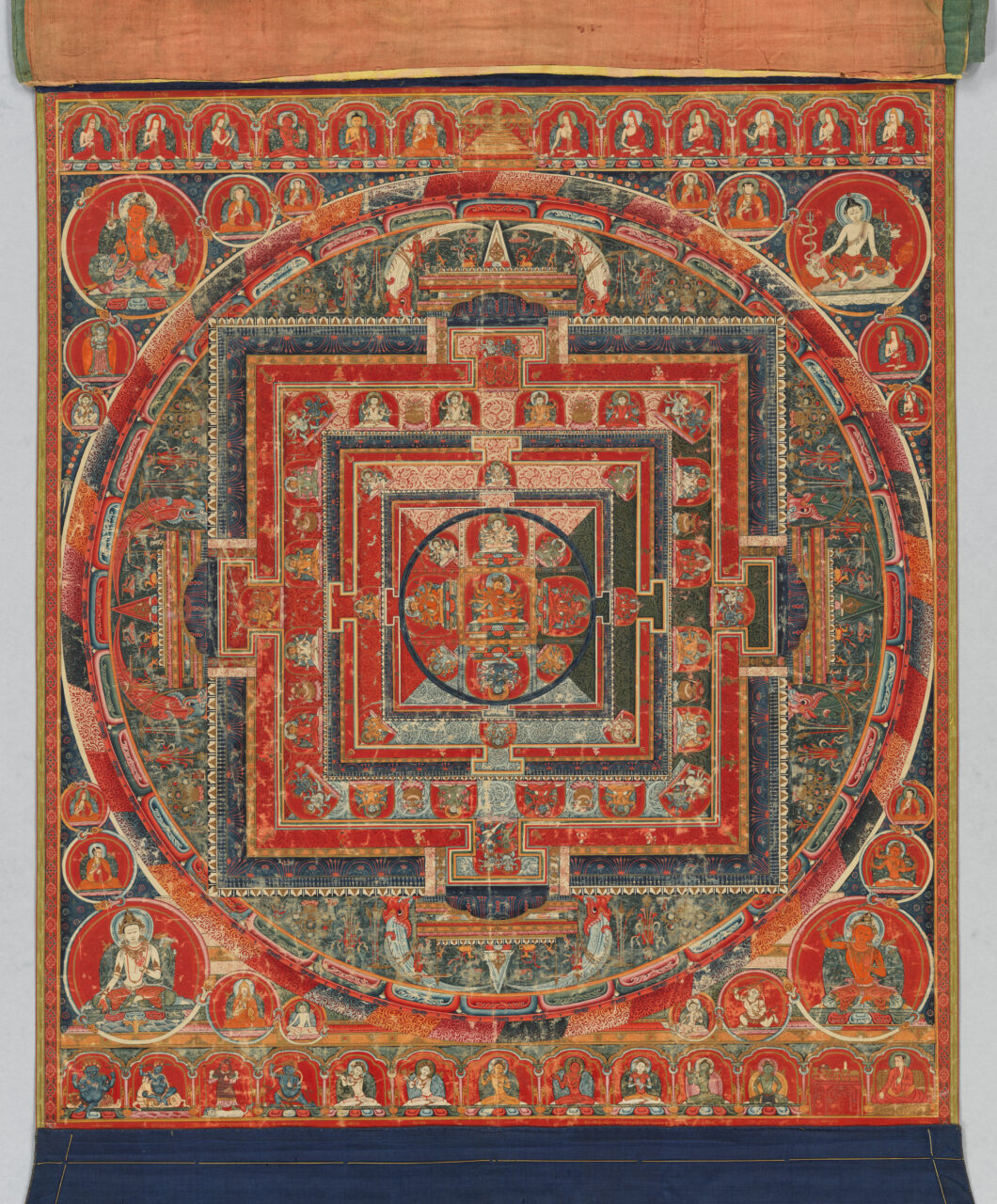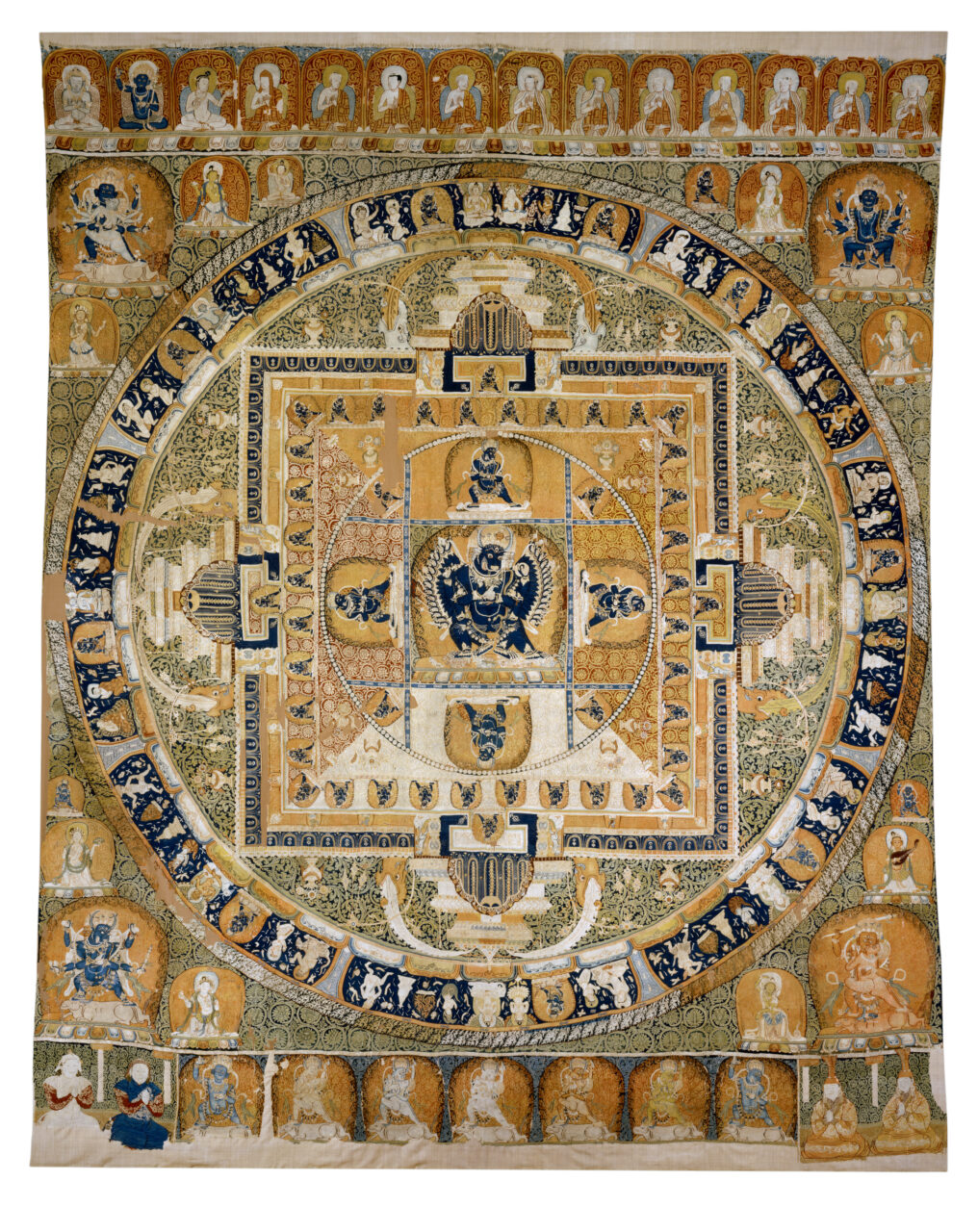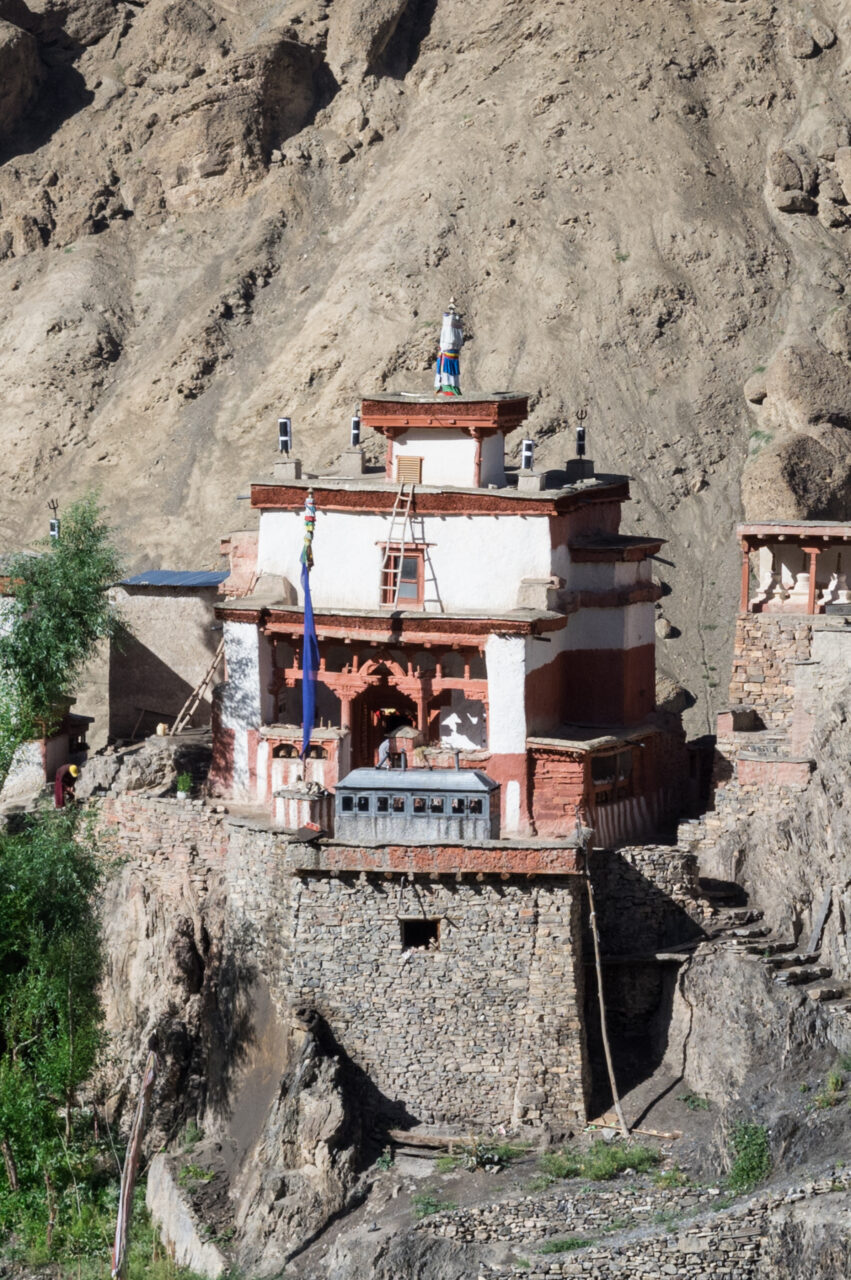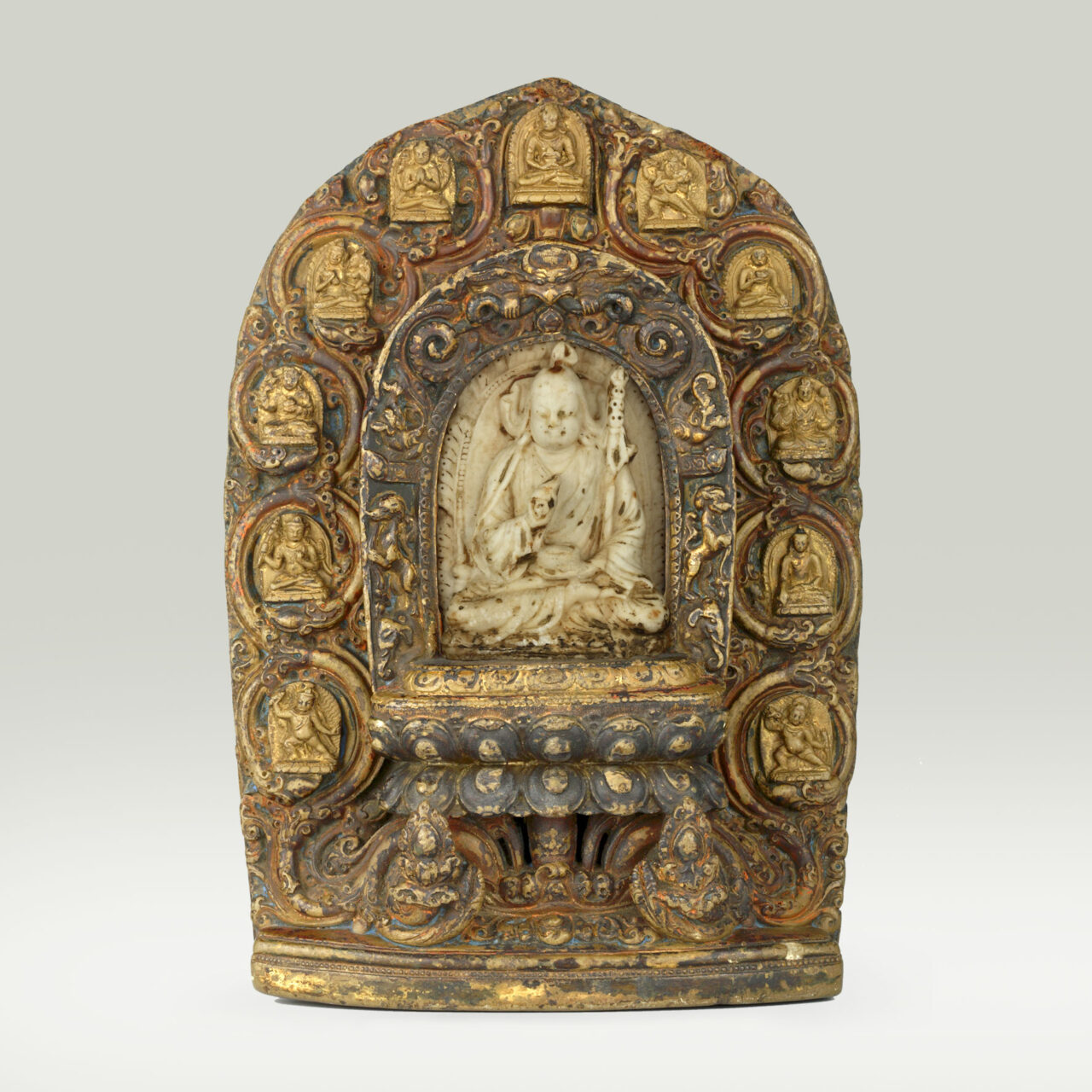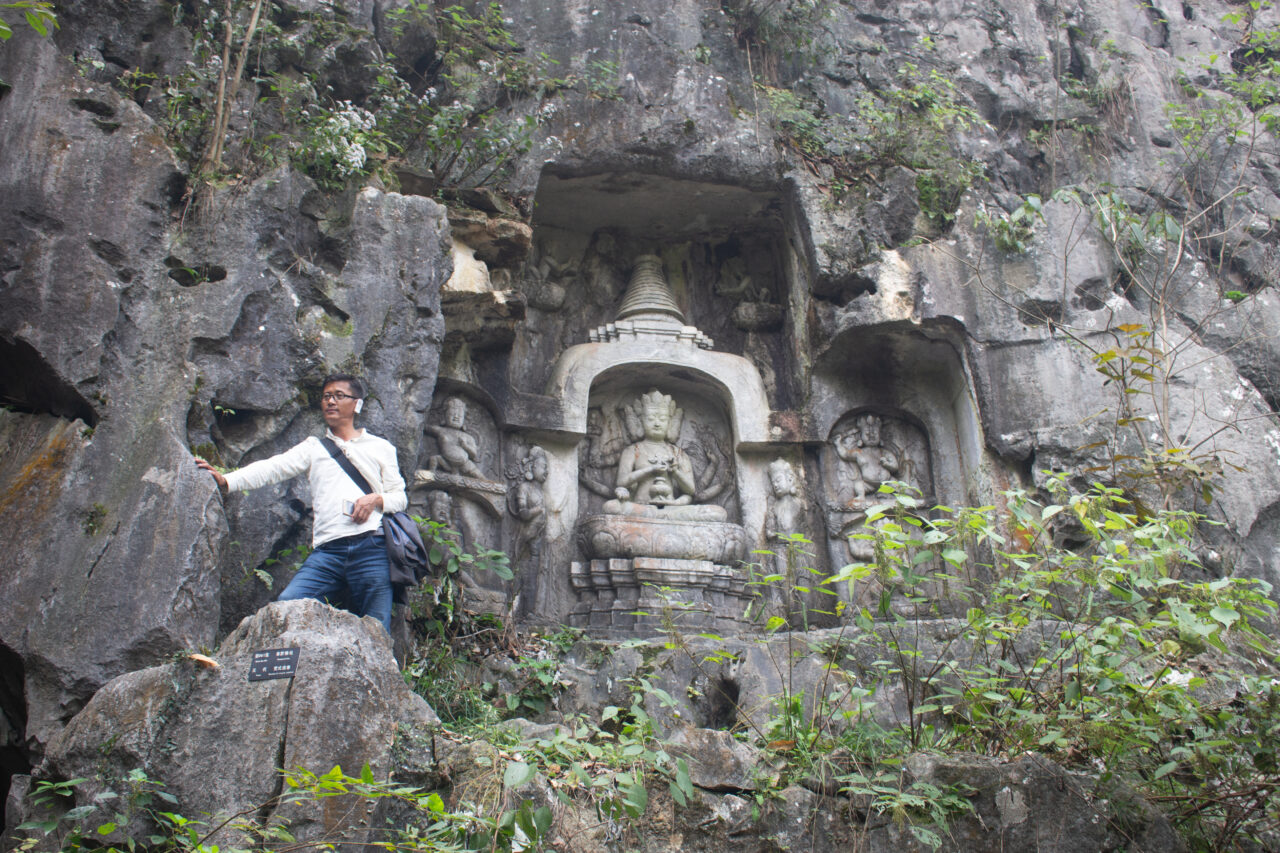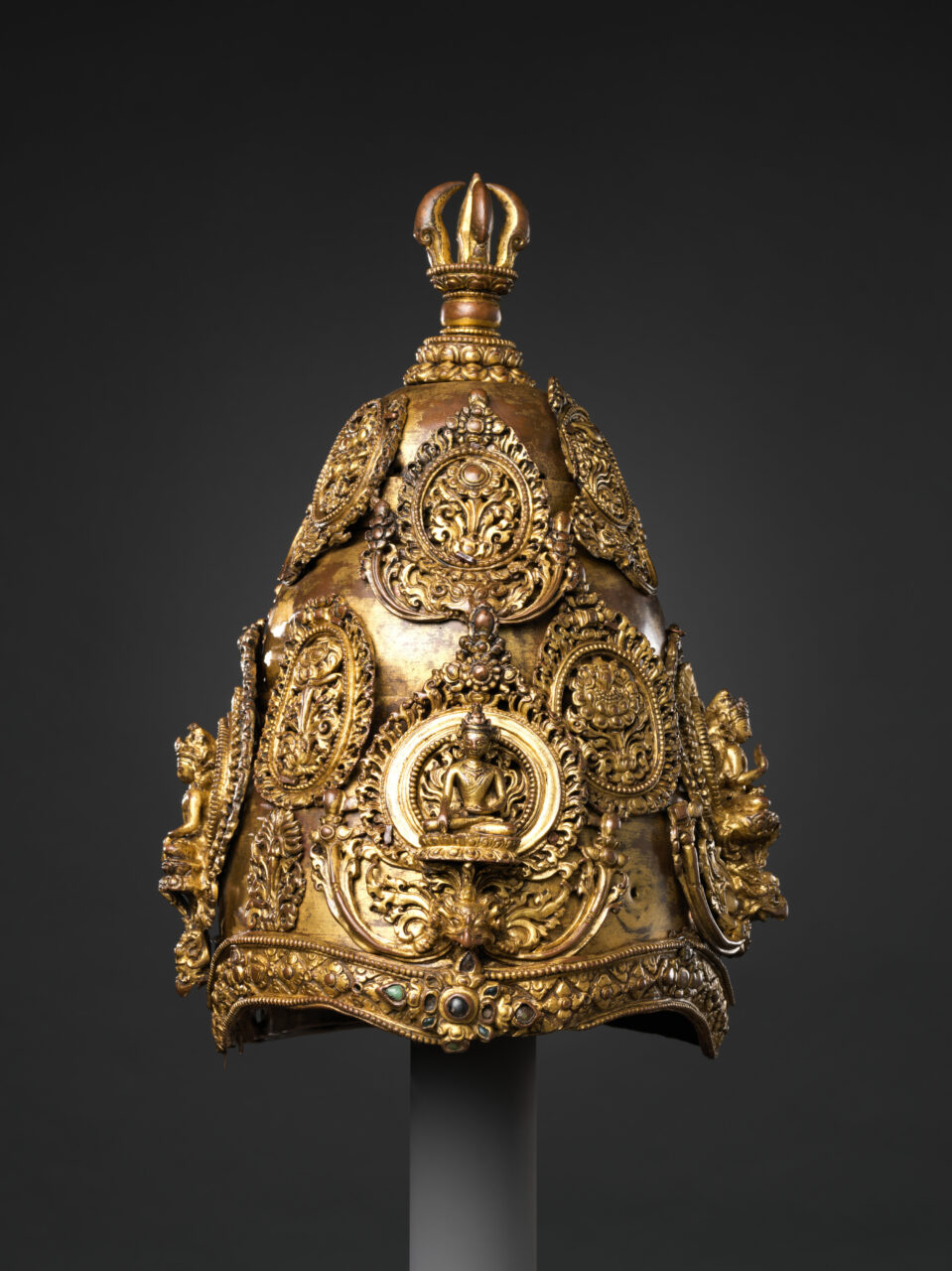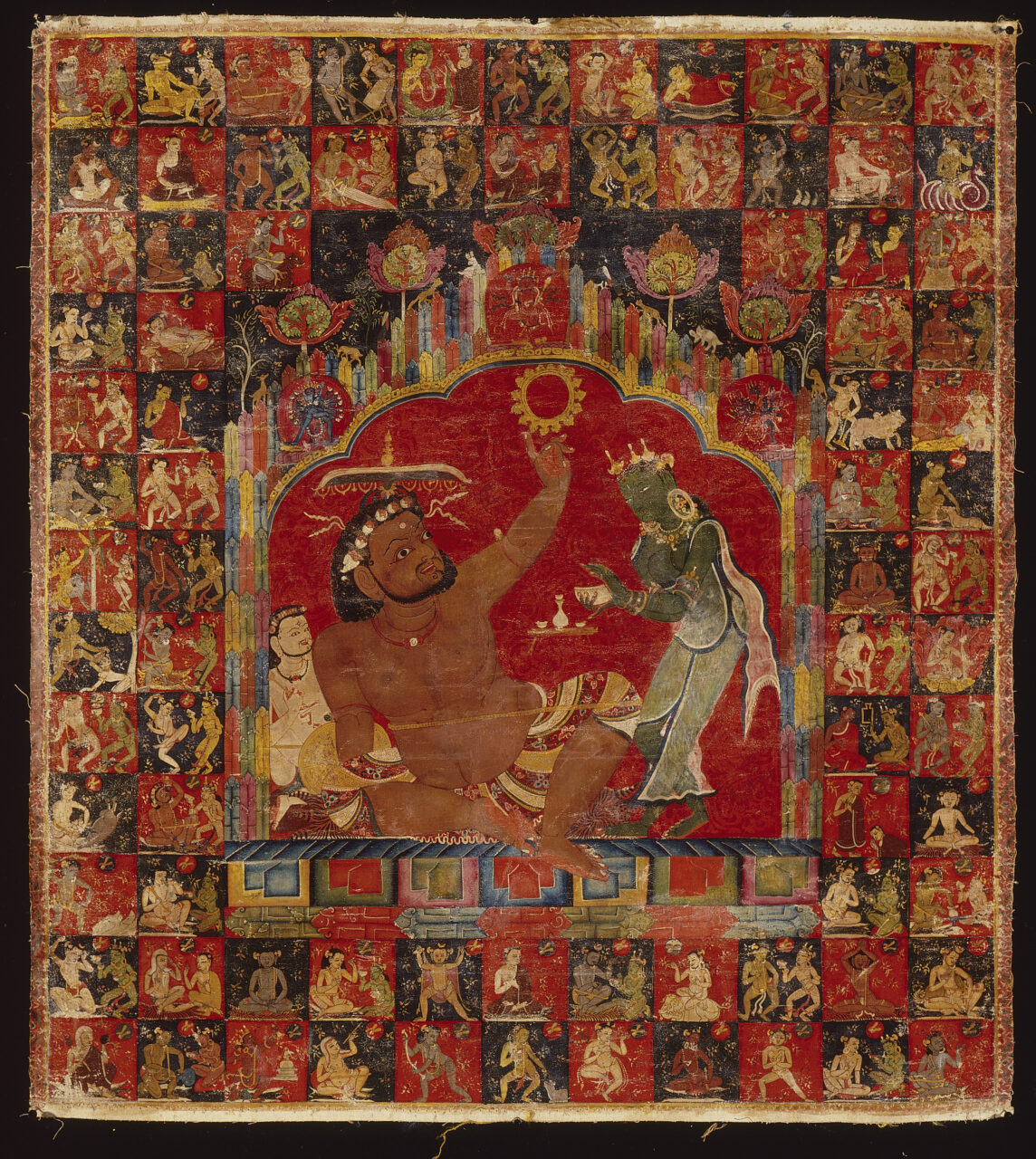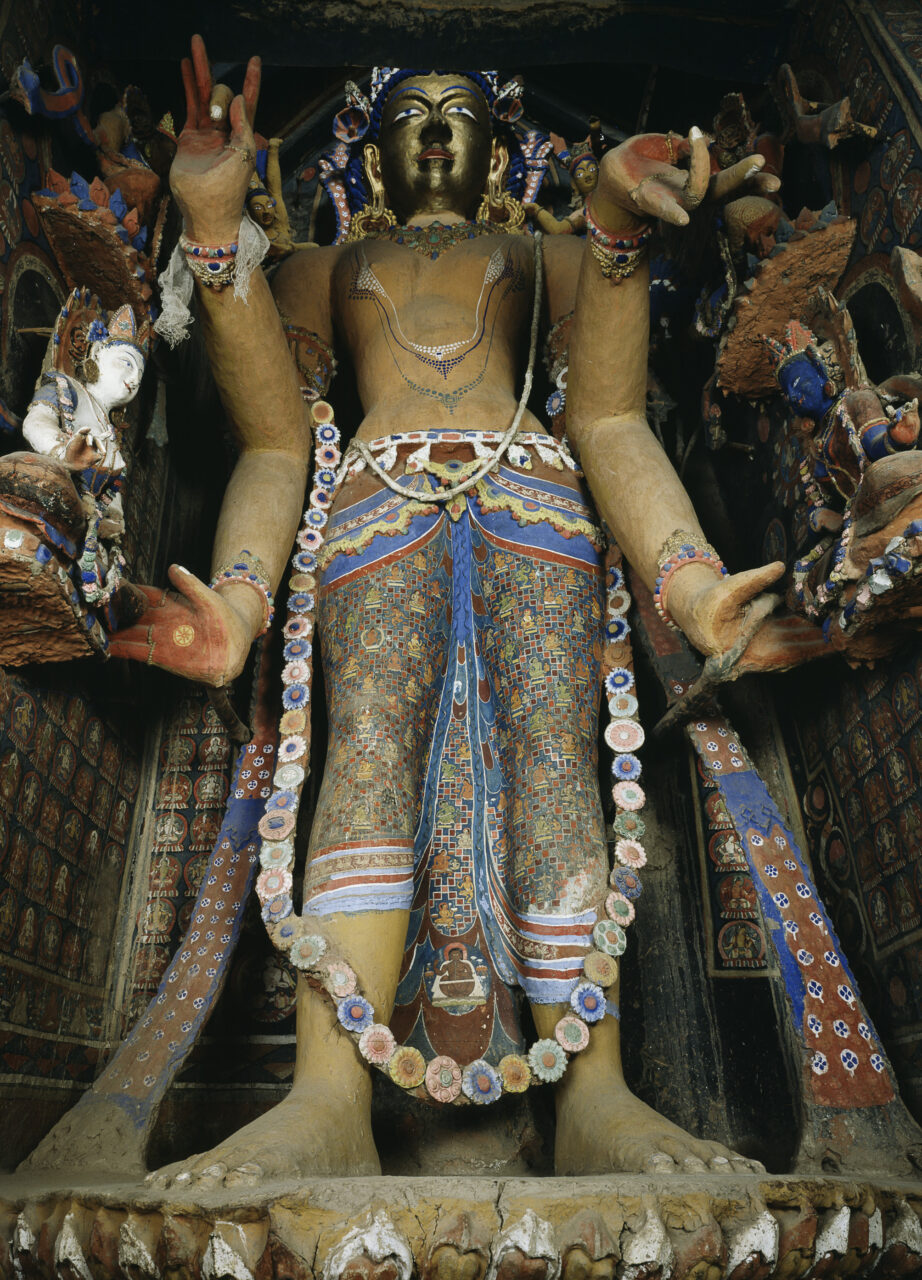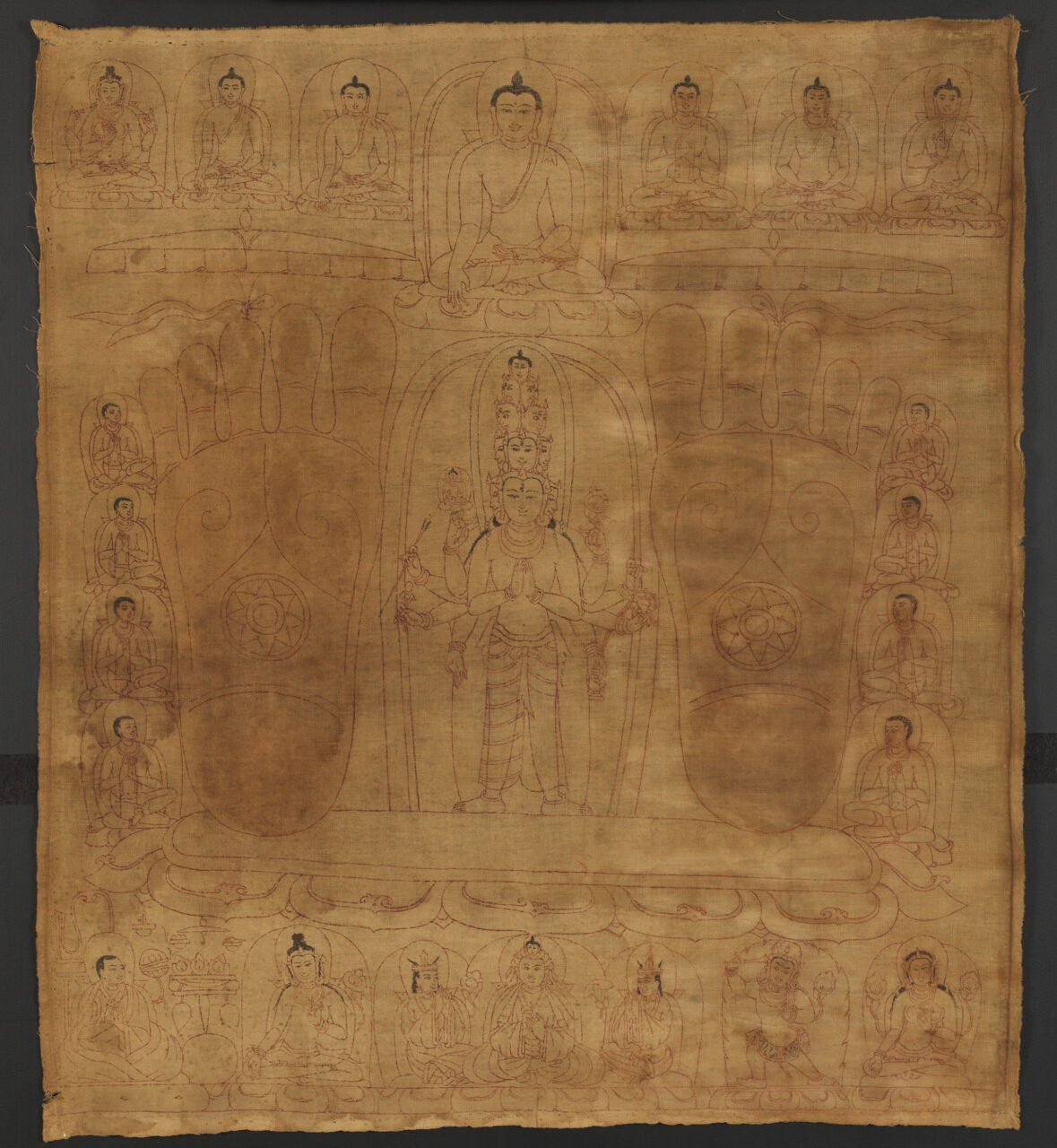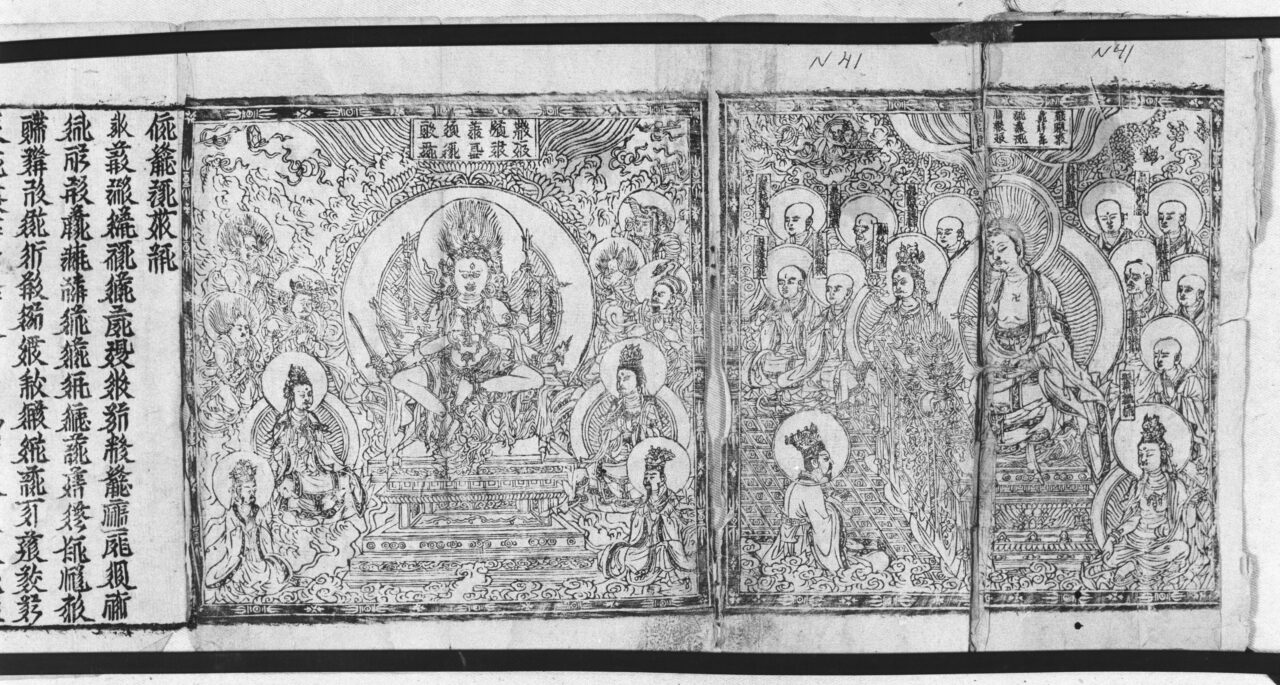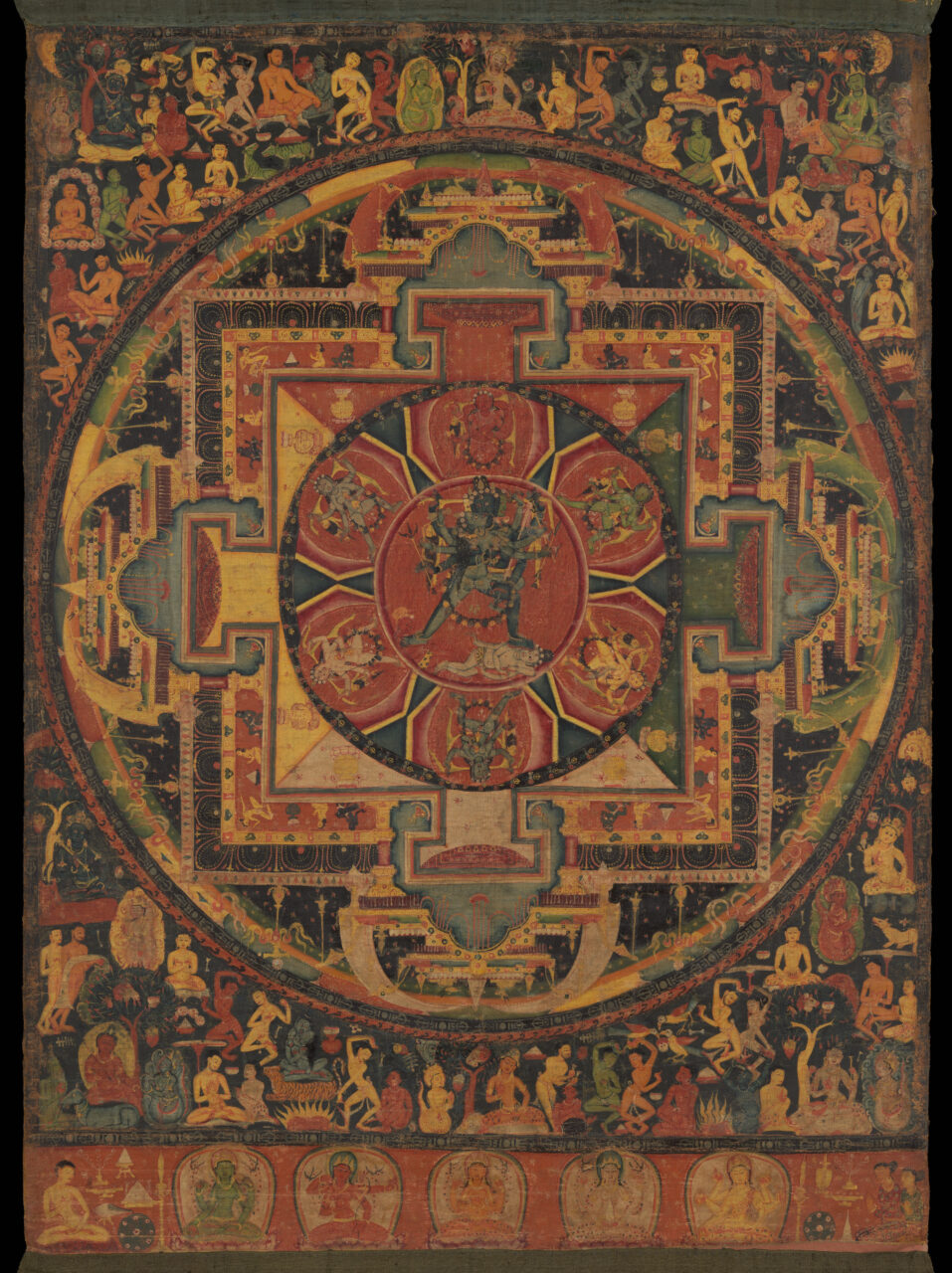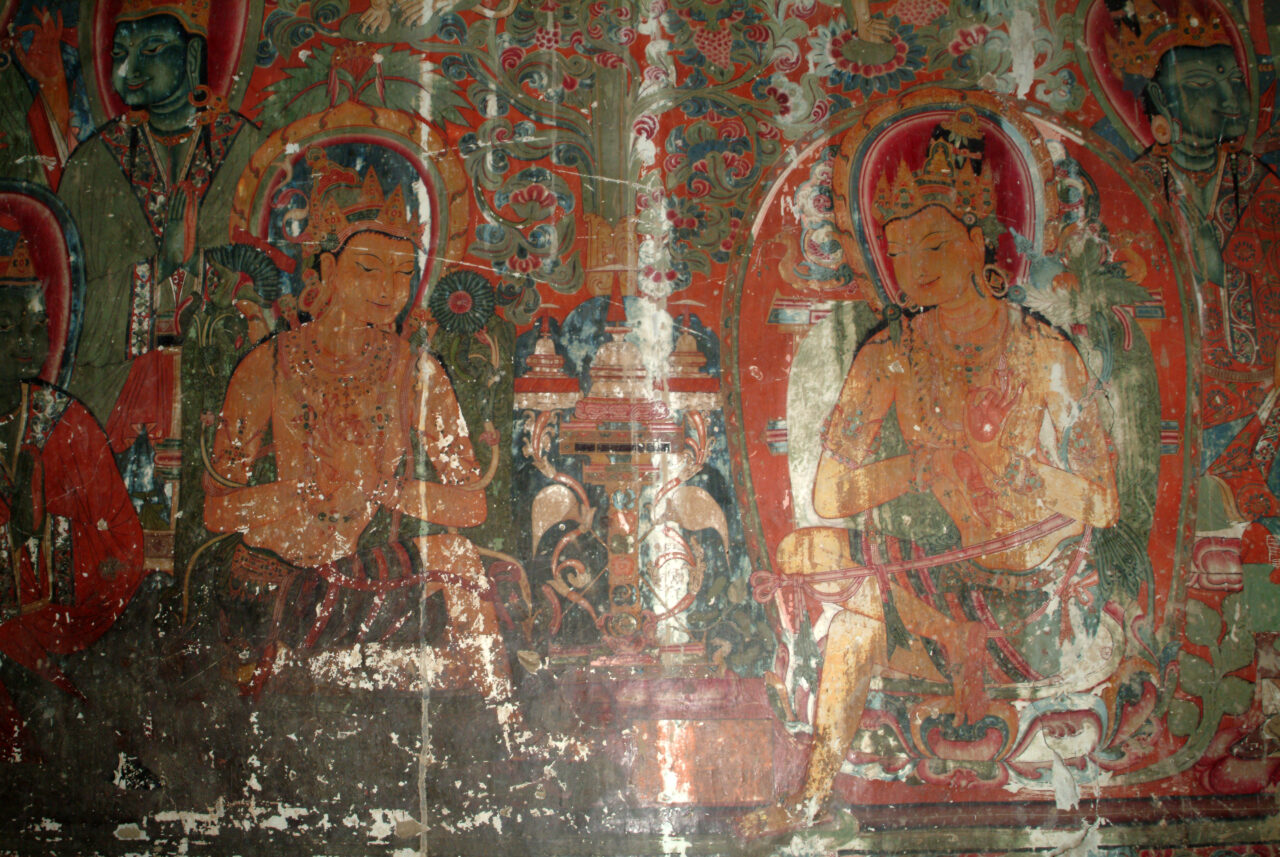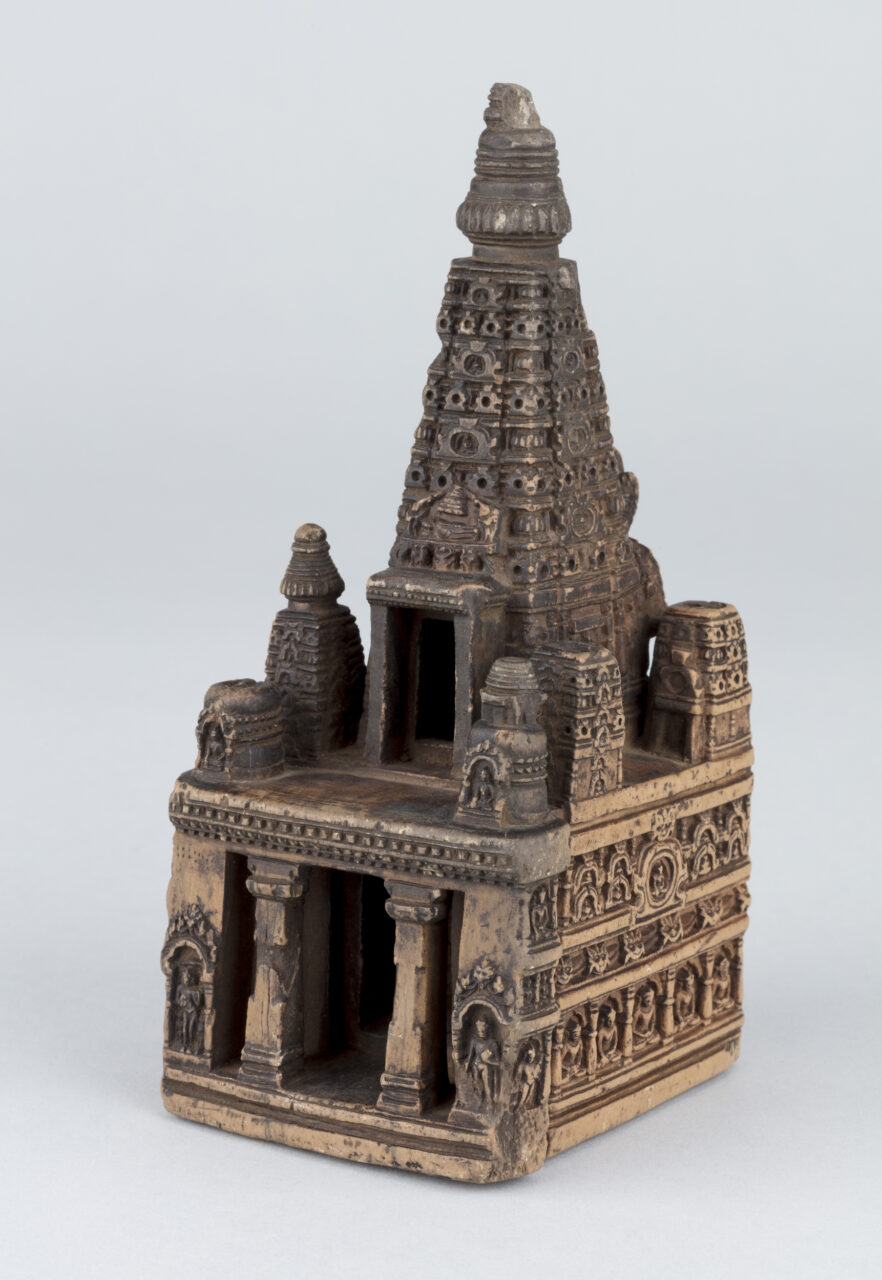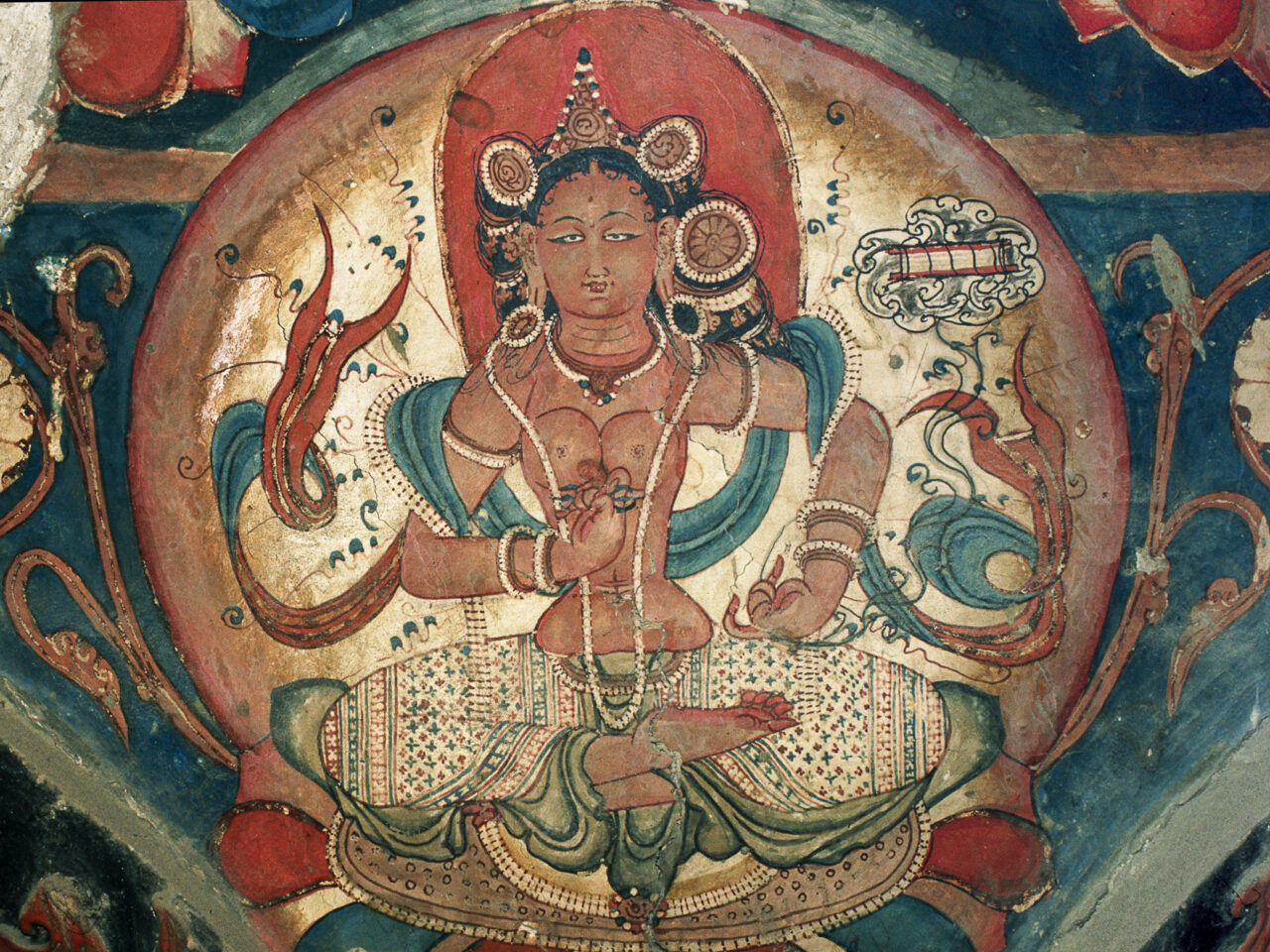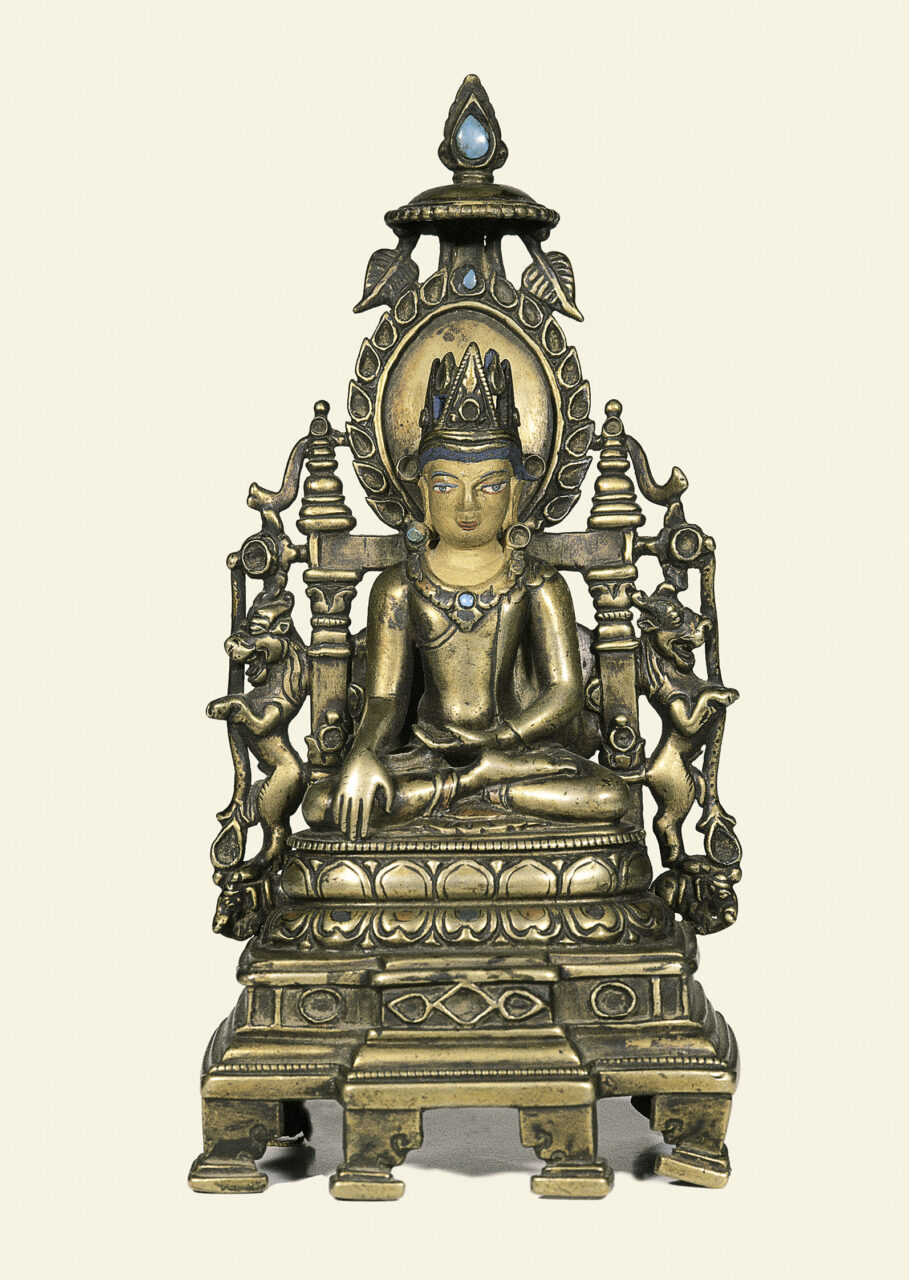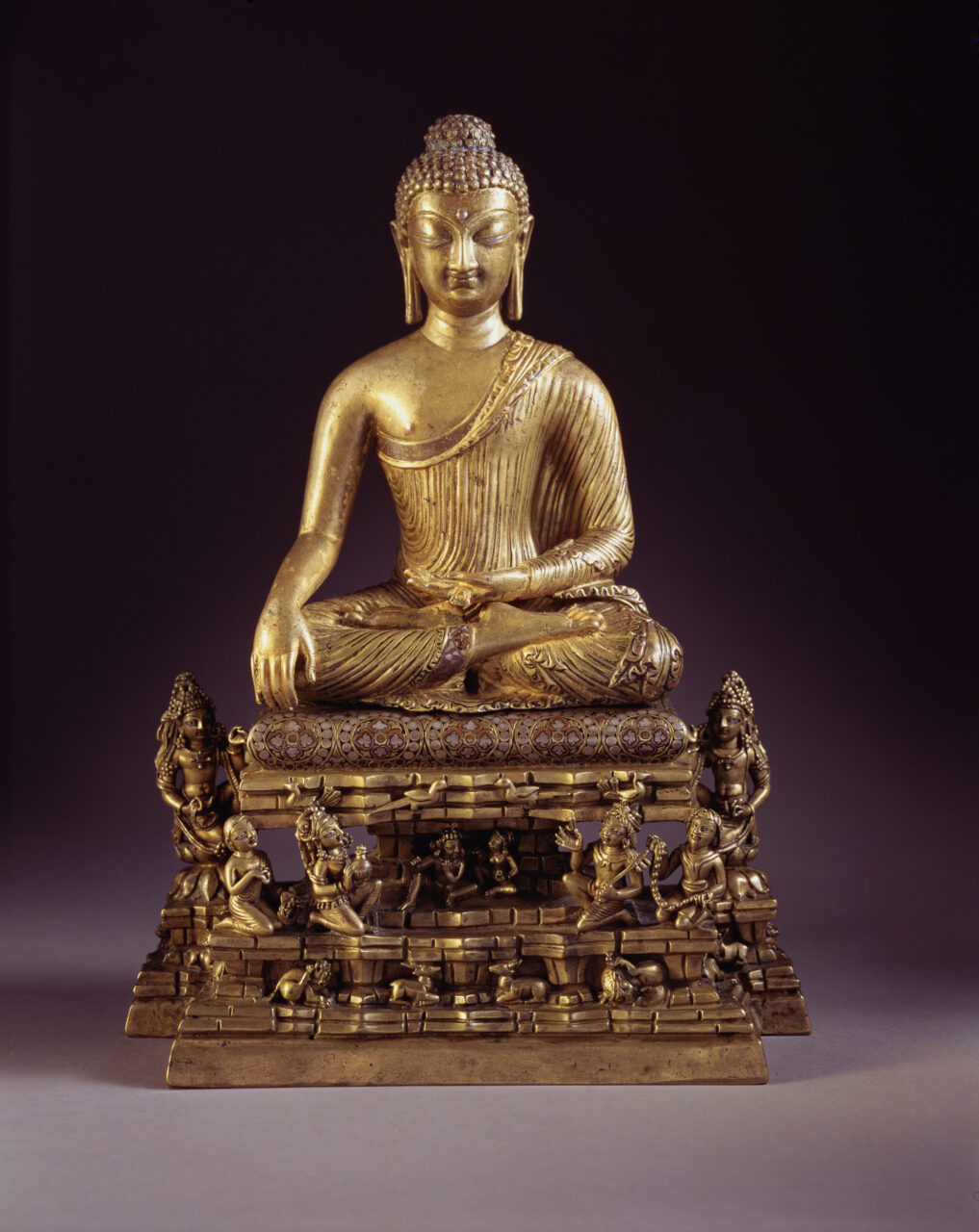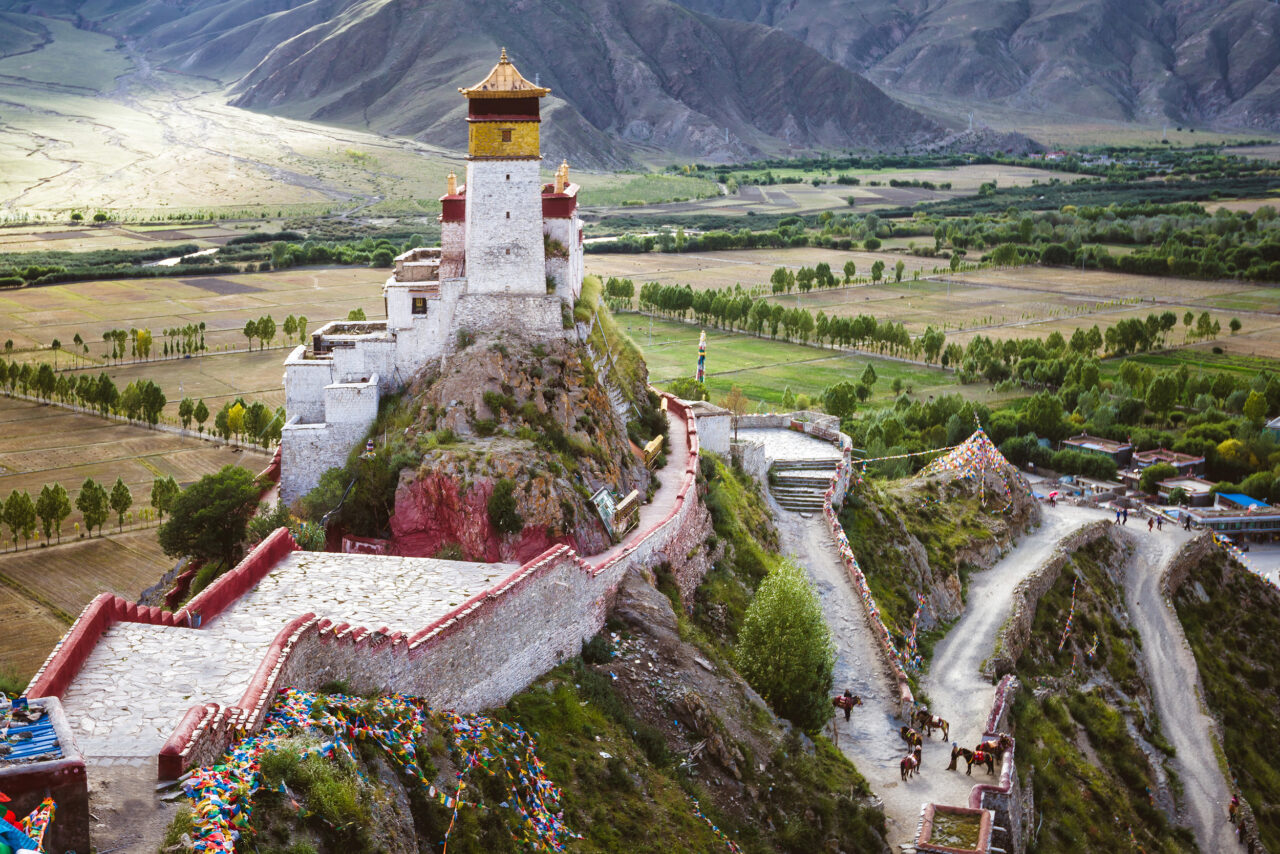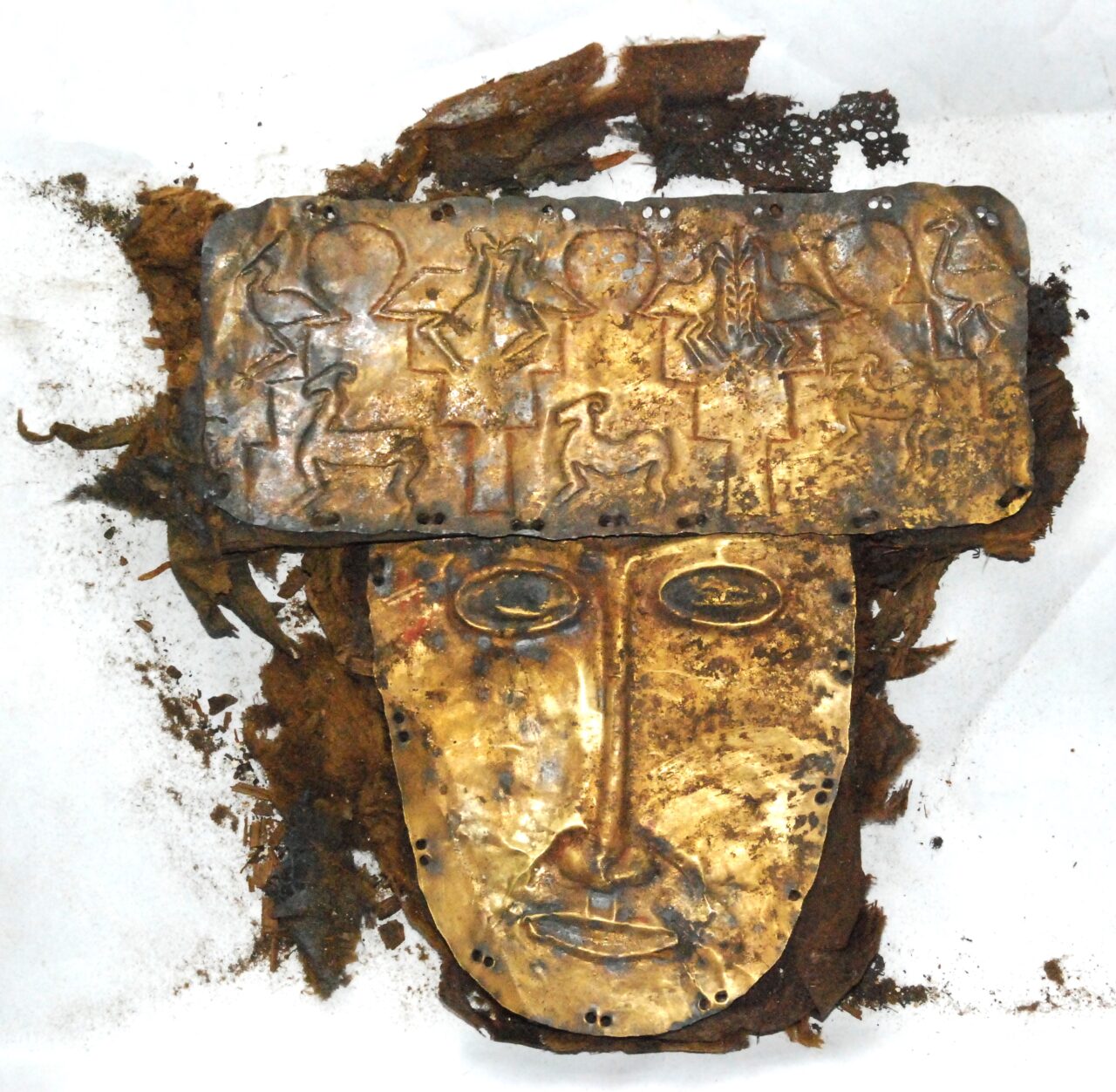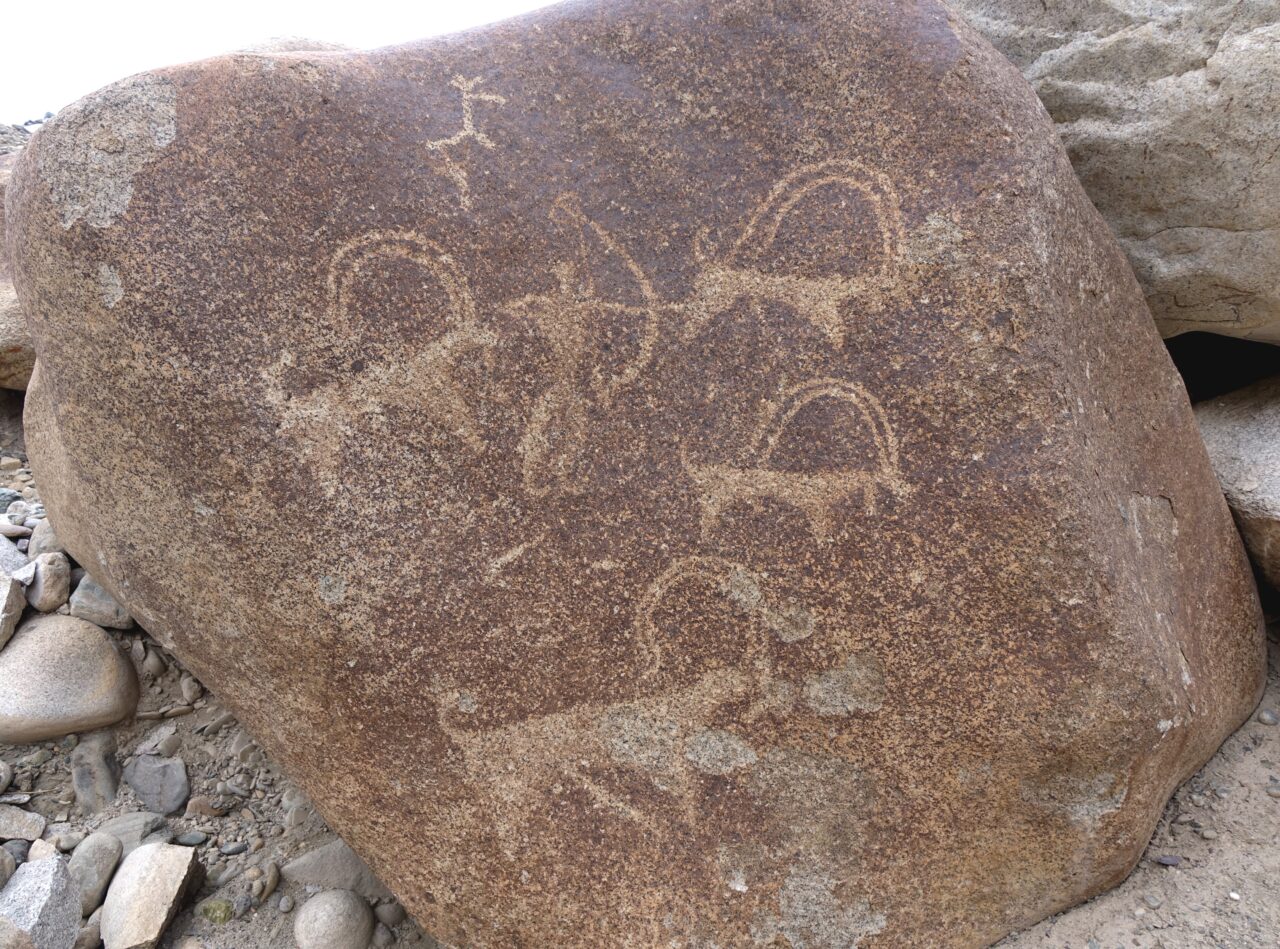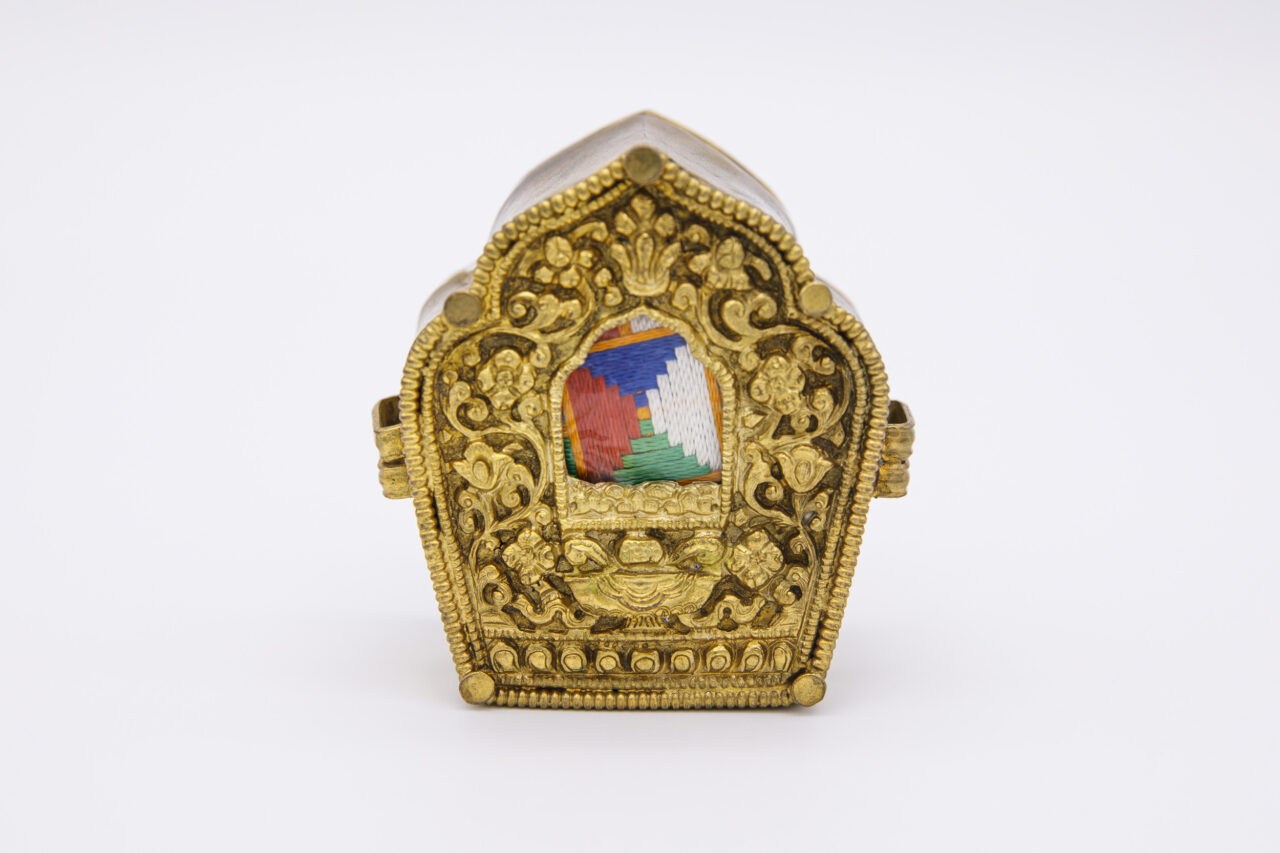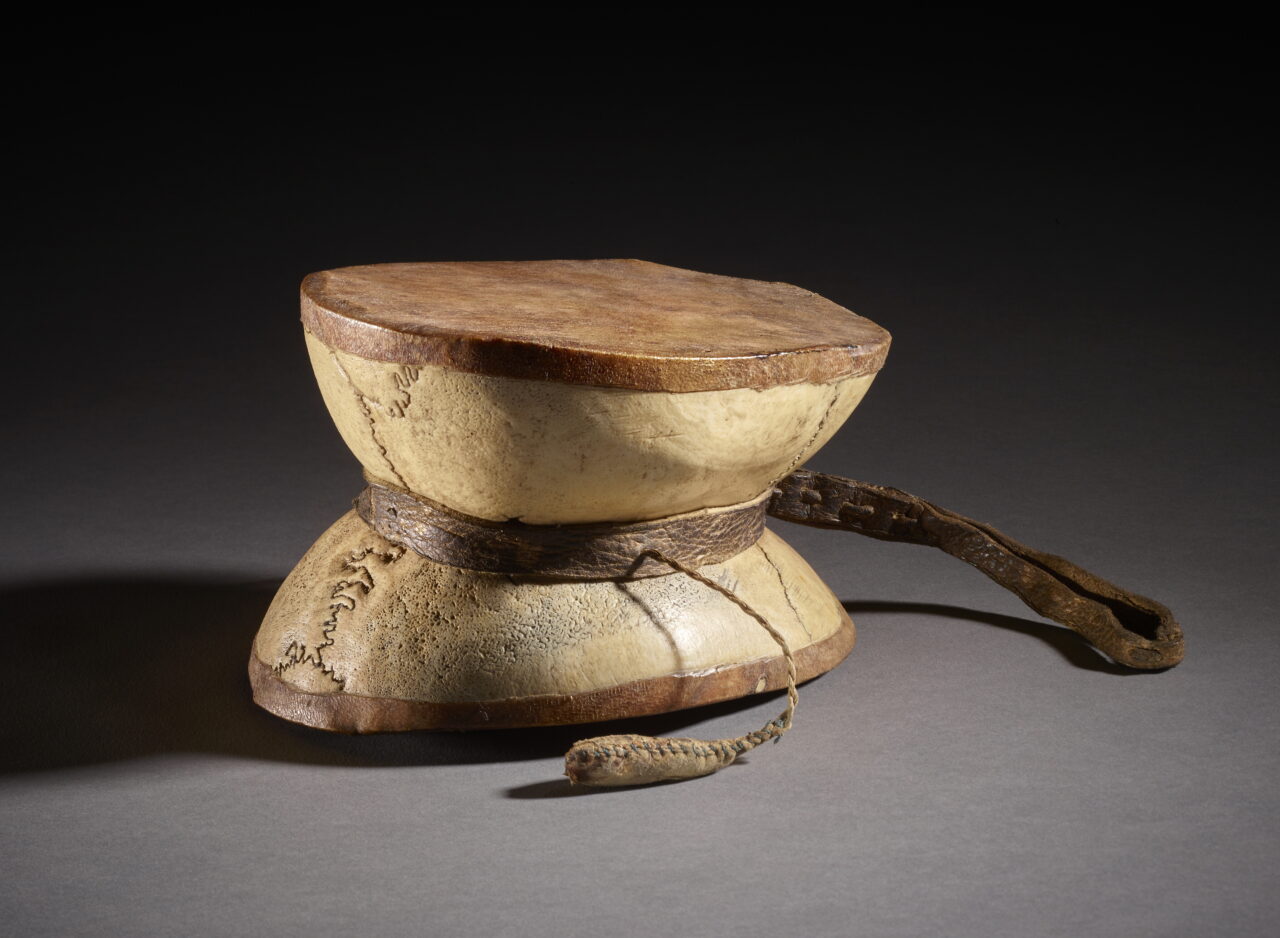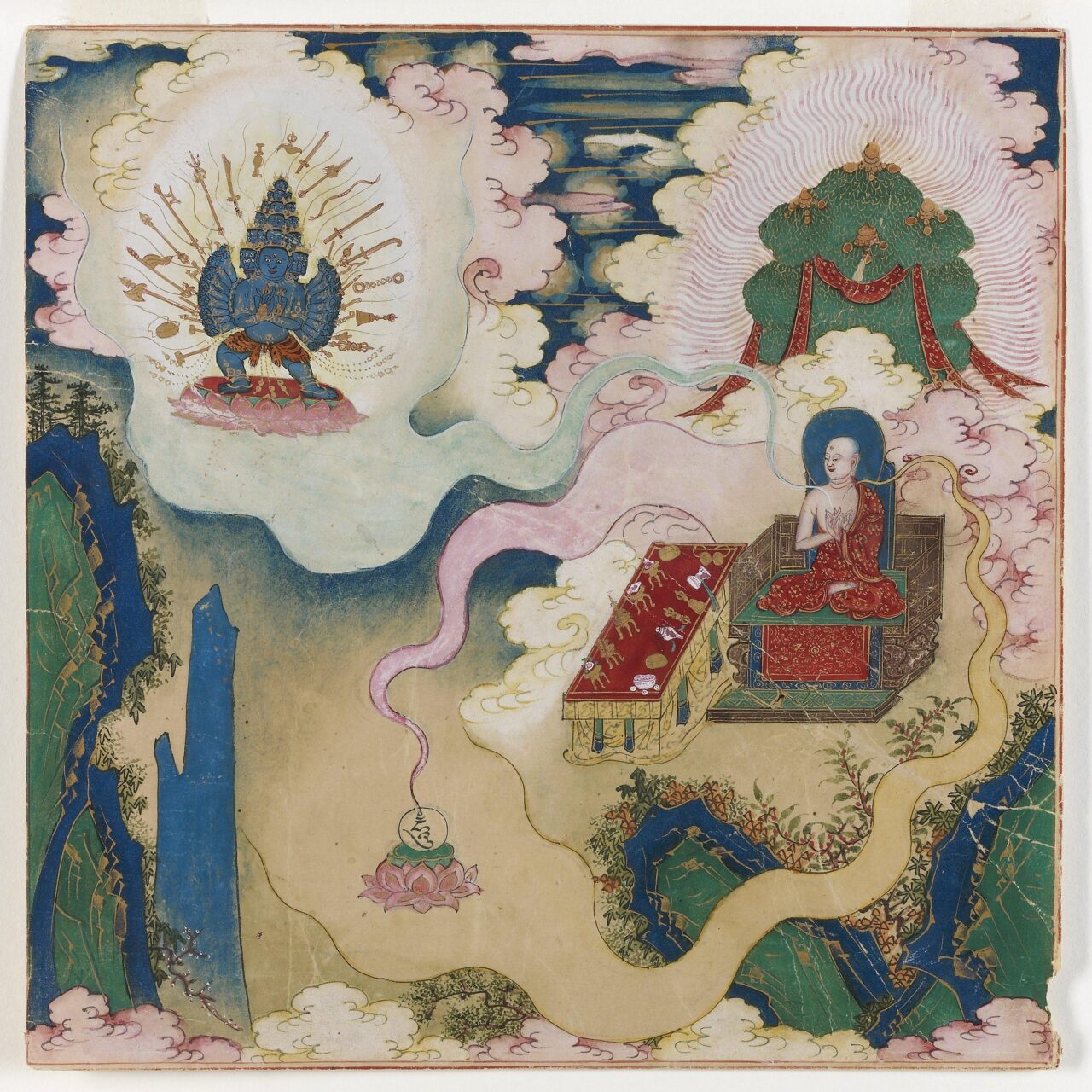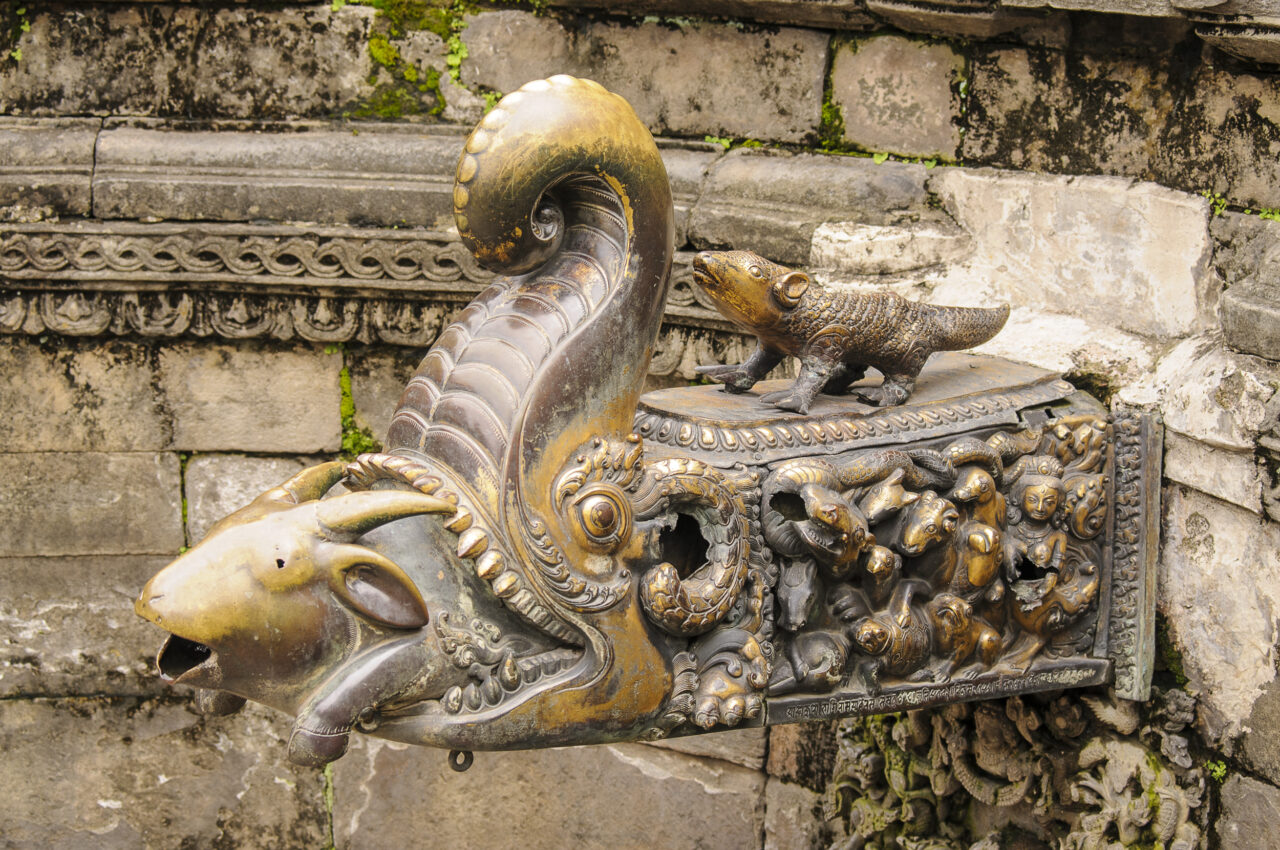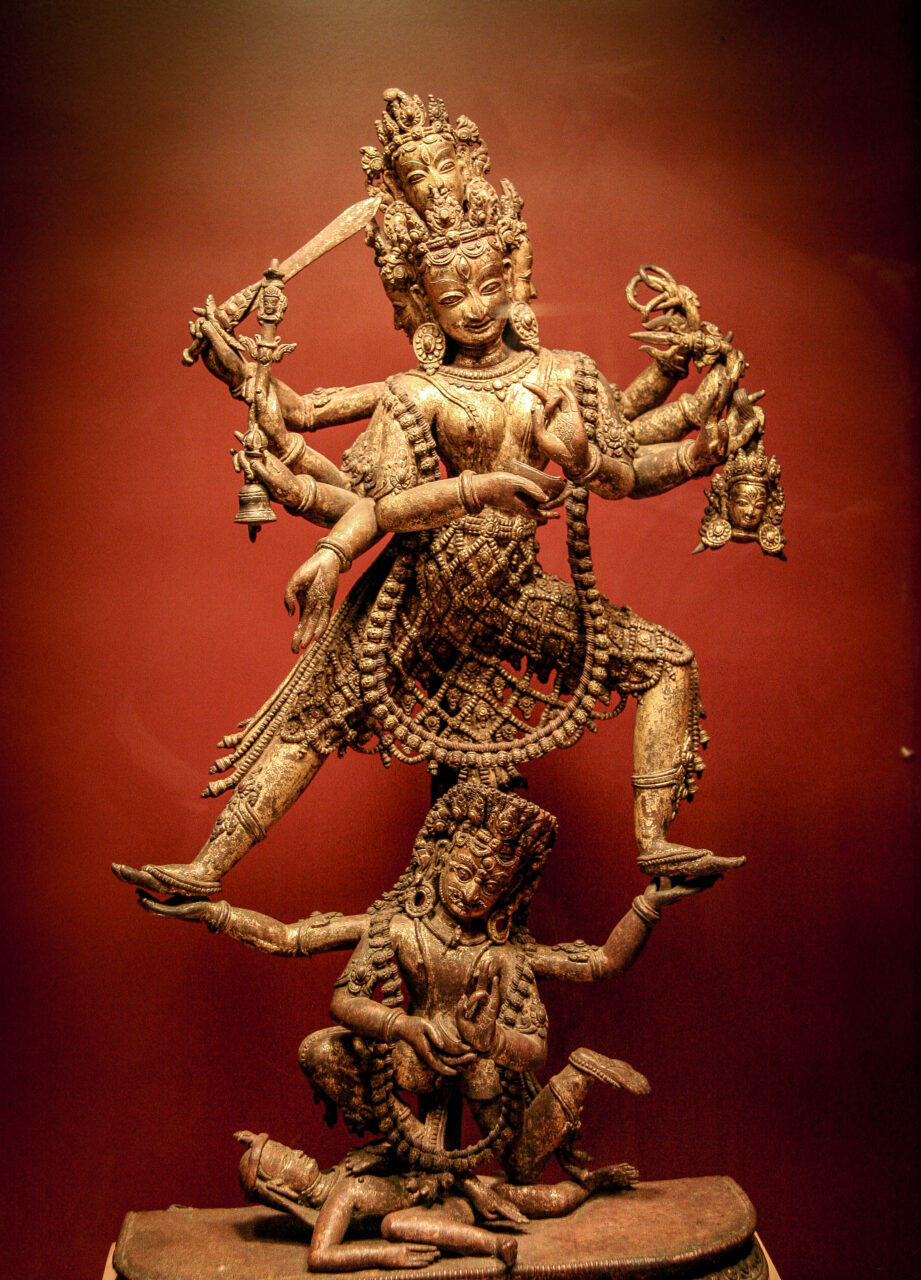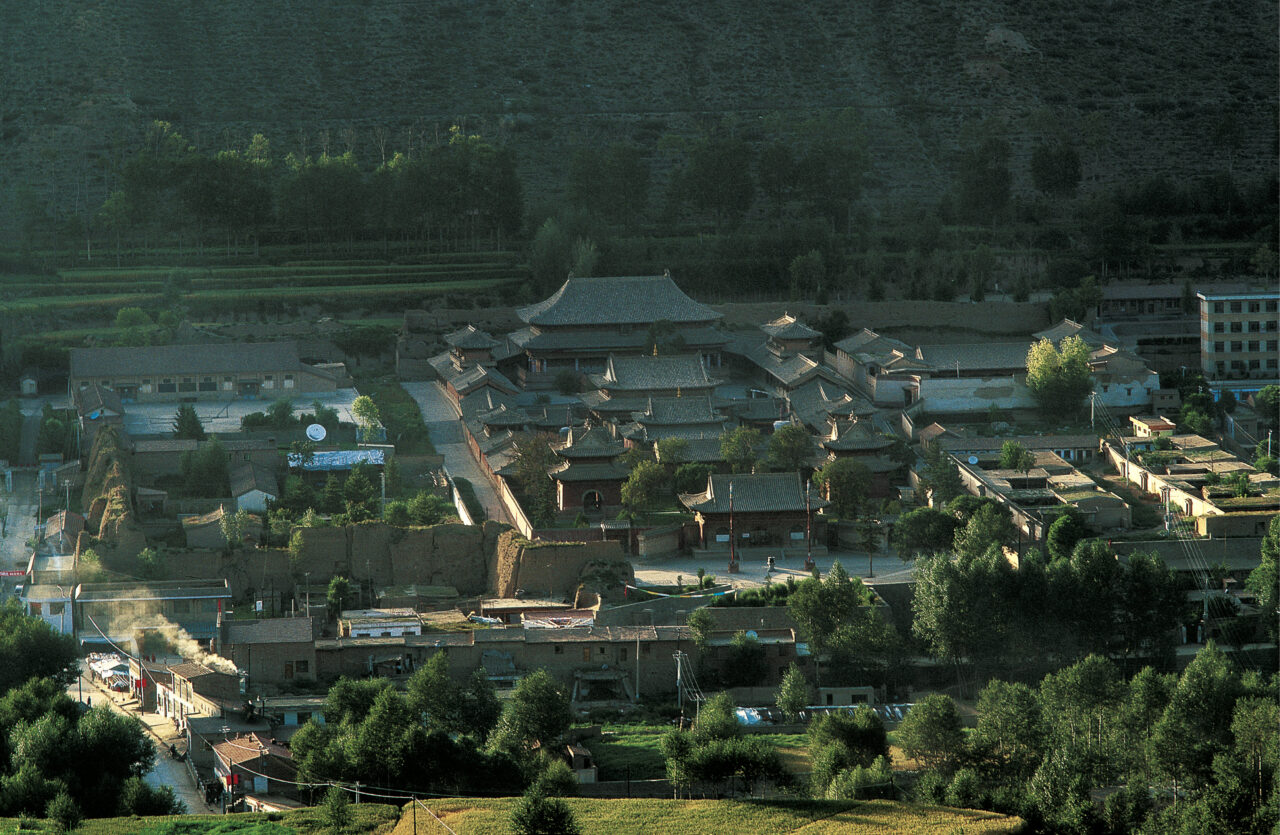In Hinduism, Brahma is a creator god, one of a trinity along with Vishnu, the preserver, and Shiva, the destroyer. In Buddhism, Brahma is also understood as a powerful god, although not an enlightened deity, who presides over a heavenly realm and protects the Buddhist teachings. Buddhists often depict Brahma together with Indra, as patrons and supplicants to the Buddha or Buddhist deity, or trampled underfoot, representing negative forces to be overcome.
Buddha Shakyamuni, or simply “The Buddha,” is an epithet for Siddhartha Gautama, the founder of the Buddhist religion. While the exact dates of Siddhartha’s life are debated, scholars generally place him in the sixth to fifth century BCE. According to early Buddhist narratives, Siddhartha was born a prince of the Shakya clan in what is now northern India and southern Nepal. Choosing to leave his palace and family for a life as a religious ascetic, Siddhartha achieved enlightenment while meditating under the Bodhi Tree. Siddhartha spent the rest of his life as a wandering teacher, gathering disciples to form the early Buddhist monastic community (sangha). Buddha Shakyamuni is revered all over the Buddhist world today.
In the Himalayan context, iconography refers to the forms found in religious images, especially the attributes of deities: body color, number of arms and legs, hand gestures, poses, implements, and retinue. Often these attributes are specified in ritual texts (sadhanas), which artists are expected to follow faithfully.
Indra is a central deity in the early Hindu Vedas. In later Hinduism, Indra is still considered the king of the gods, but his role is less prominent. In Buddhism, Indra also has the role of king of the gods, although these gods are considered neither enlightened nor immortal.
In Hinduism and Buddhism, mudras are ritual hand gestures made by deities, Buddhas, and other sacred figures. These hand gestures are important and relatively standardized parts of deities’ iconographies. Mudras are also performed by practitioners during rituals, allowing them to take on the bodily attributes of the deities.




